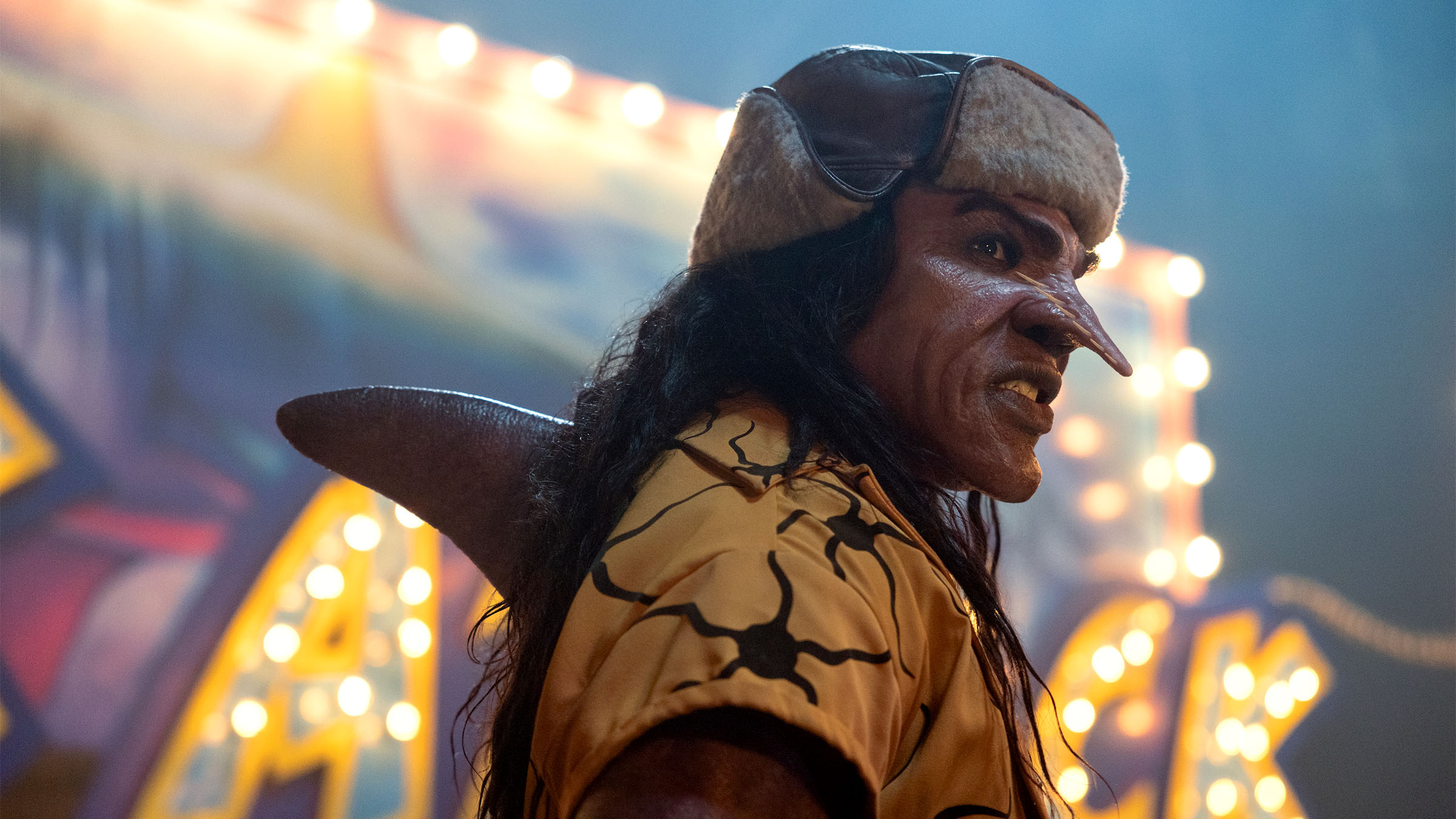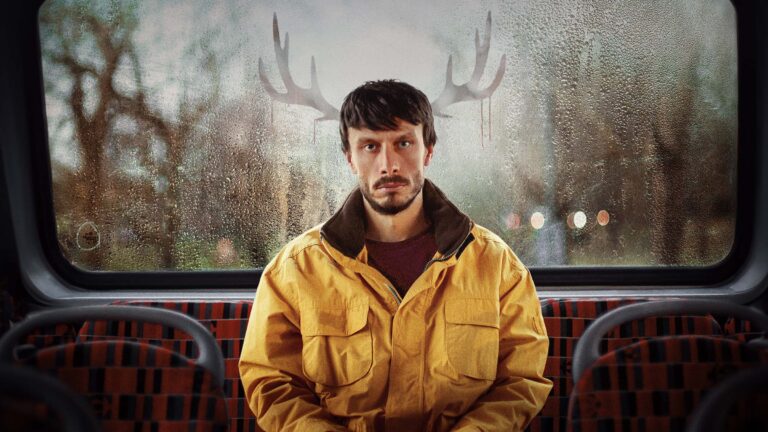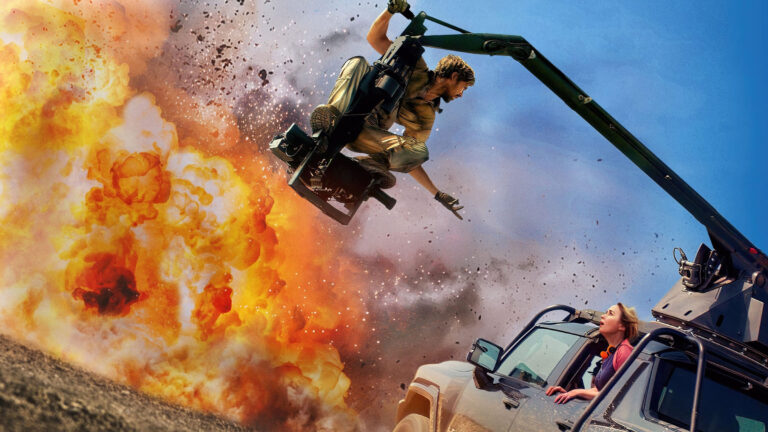Going into this live-action adaptation of the beloved manga series One Piece, the editing team knew full well that they had a huge challenge on their hands. Expectations were high and previous attempts to adapt other manga series had left those fanbases disappointed, to say the least. Fortunately, they had a talented crew around the globe, plus ample time and resources from Netflix to finally crack the code of making a hit series that would satisfy the die-hard manga fandom.
One Piece plot summary
One Piece follows the adventures of the Straw Hat Pirates as they explore the dangerous oceans, lands, and beyond in search of the “One Piece,” a fabled treasure that will make their captain, Monkey D. Luffy, “King of the Pirates.” But the Marines are on their ship’s tail, and they are not the only crew searching for the One Piece. Armed with skills and an unbreakable friendship, the Straw Hats are ready for the journey and even more ready to fight for their dreams together. Adapted from the legendary manga series from author Eiichiro Oda, One Piece was developed as a live action series for Netflix by Matt Owens and Steven Maeda (under Oda’s watchful eye).
In our discussion with the One Piece editing team, we talk about:
- 24-hour cutting rooms
- Endearing dailies
- The beauty of Paint Tool sock puppets
- Keeping score on youthful tension
- Toning down the temp effects
Listen while you read…
Editing Netflix’s One Piece
MF: By all accounts, this is the biggest series that Netflix has ever done. You can imagine it’s a coveted gig, and you all got it. I think we should start off talking about how you got on the show. Kevin, you’re Mr. Short Straw. I thought we would start with you and find out about how you got on One Piece.
Kevin D. Ross, ACE: This was a show that my agents actually put me up for. It turns out that Tirsa Hackshaw, who’s another editor, and I have the same representation and she got the job too.
I read the script and thought it was cool. Unfortunately, I don’t come from a world of manga or anime, so I really didn’t know anything about One Piece at the time, but it seemed intriguing and exciting.
I had an interview with the Netflix, Tomorrow Studio reps, the showrunners, Matt Owens and Steve Maeda, and my director of the first block, Mark Jobst, who are all in Cape Town, South Africa. Our post producer at the time, Steve Welke, was in Australia working on another show. It was a worldwide interview, basically a big Zoom. We clicked and I got the gig.
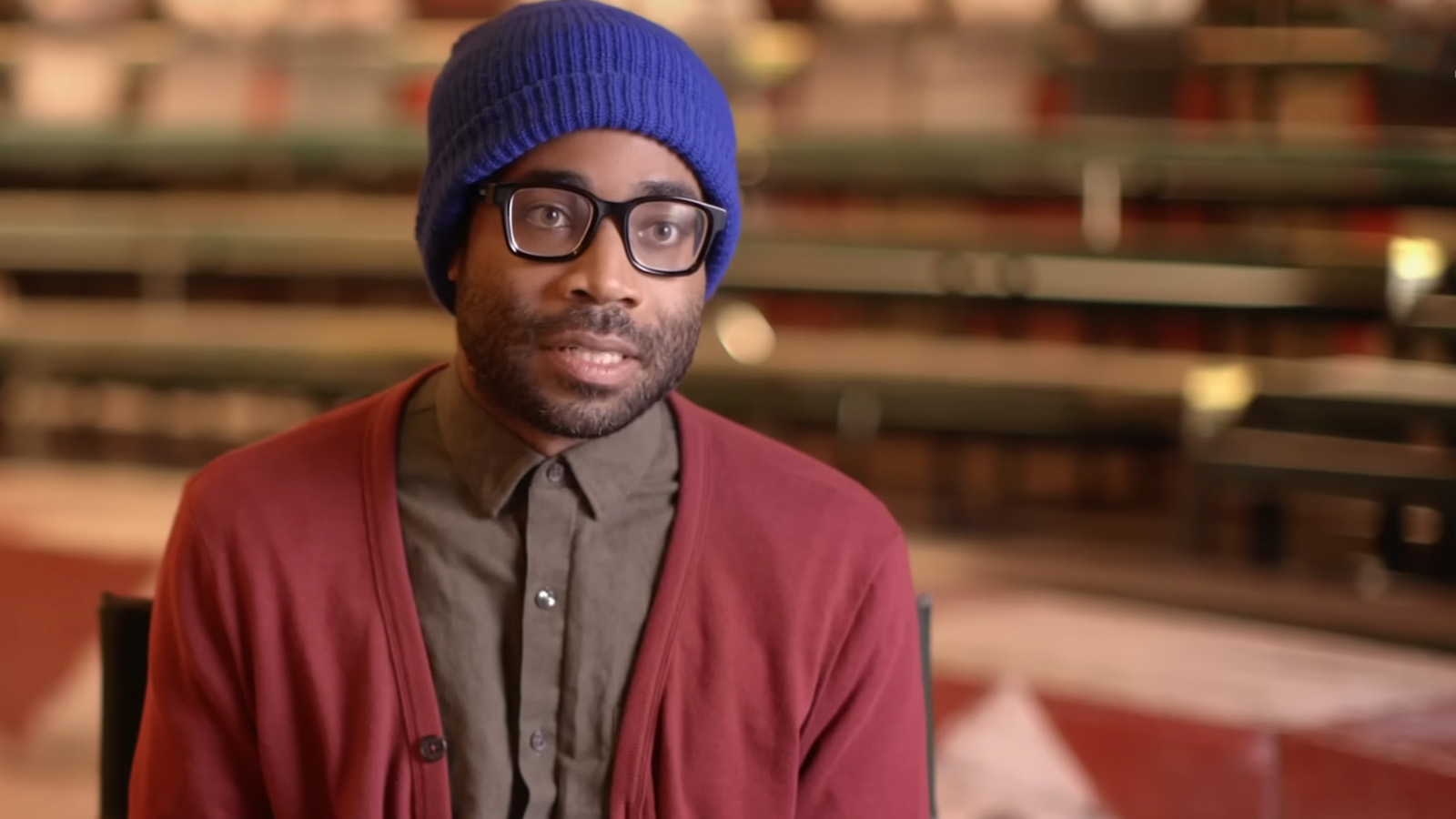

MF: It’s all about the big Zoom. You ticked off a lot of names there and I want to get back to that later on because there are so many players in this show. I’m just wondering what kind of impact that has on post production. But we’ll get to that. Mr. Litman, what is your story?
Eric Litman: Similar to Kevin, I also had a meeting with all the same players. I had worked with Matt Owens on Marvel’s Agents of S.H.I.E.L.D. so I was aware of the show for a number of years. I stayed in touch with Kevin, and then we had this thing called the pandemic that slowed everything down. I thought that maybe the show had gone away because a lot of time had passed.
When things started to open up again, I reached out to Chris Symes, whom I worked with on Black Sails. He’s from South Africa and he said, “Yeah, I would love to get you a meeting.”
I took the meeting and I heard crickets afterwards. I thought, “I guess I didn’t get the job.” A number of months went by and then my agent called me and said, “Hey, they want to bring you on, but in six months.” I said, “I can’t wait!” So I had to wait six months. They brought me on for episodes three and four.
MF: It’s interesting that you brought up Black Sails. There seems to be a strange crossover between Black Sails and One Piece, aside from the whole pirate thing. Black Sails is done in Cape Town. I know a few people that worked on both shows. That’s interesting to me, but let’s move on to the don’t-call-them-the-assistants. They’re also co-editors. I have to hear how you guys got these coveted gigs. Why don’t we start with you, Adam?
Adam Pearson: I had actually been working with Eric on a pilot prior to, when did the show start? It started so long ago.
Eric Litman: June of 2022.
Adam Pearson: Wow. So yeah, we had been working together for a couple of months on that. Eric got in touch with me, was it after we had wrapped on it or right towards the tail? I can’t remember.
Eric Litman: I think I called you and I said, “Hey, I’m doing this pilot. I need someone right away. Then I have this other show that’s pretty big. If things work out well between us, I’d like to take you on to that.”
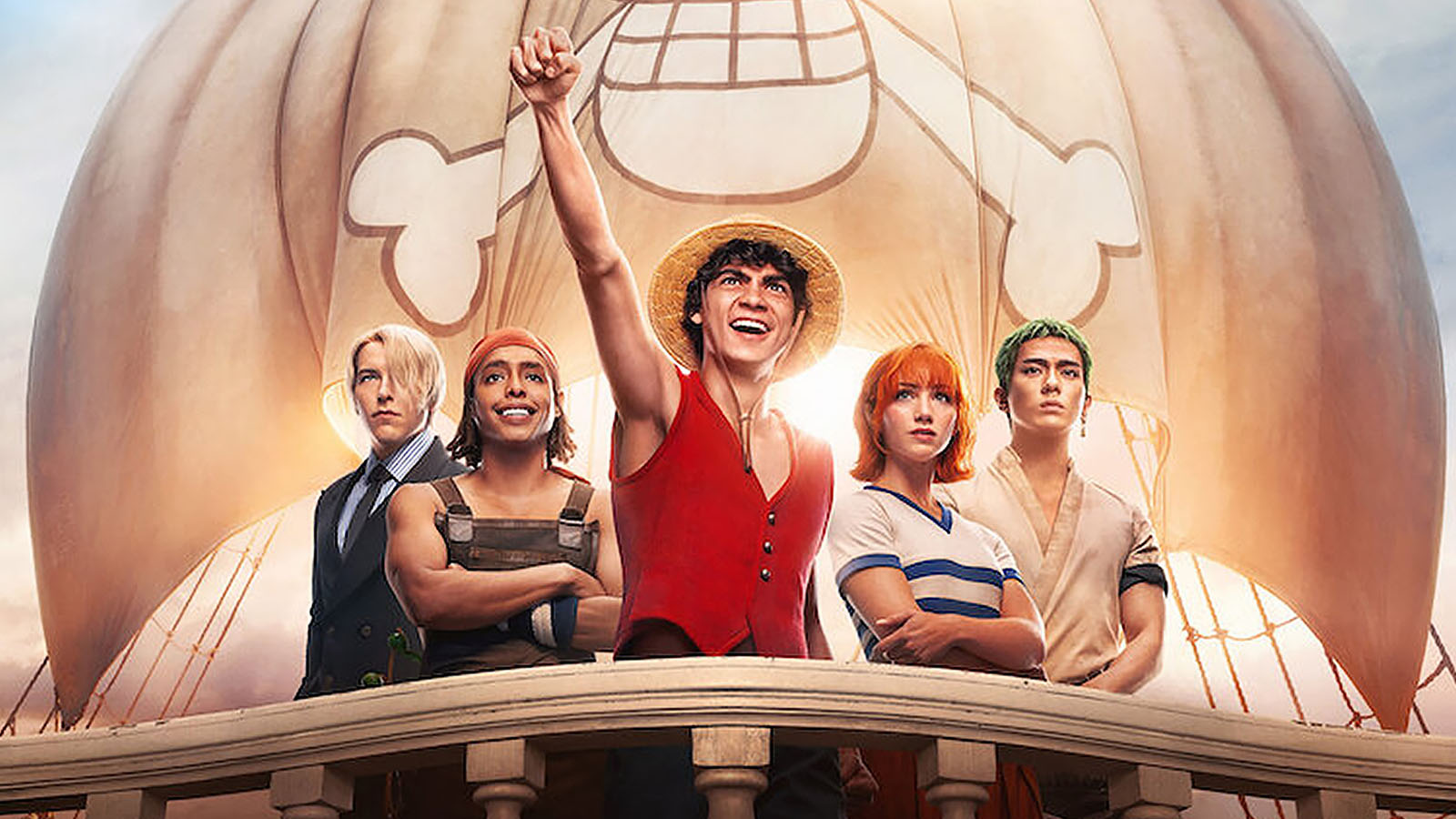
Adam Pearson: That’s right. The pilot was the first time that Eric and I had actually worked together. It ended up going really well.
Eric Litman: It went exceptionally well.
Adam Pearson: When Eric said that he had this other big show, I thought, “Okay, cool. That sounds promising.” When he told me what it was… I am a big, lifelong anime fan. When he told me what it was, I was almost hesitant to believe it because I was thinking, “If this doesn’t actually come through, I’m going to be so upset.”
MF: Well, it worked. You got it.
Adam Pearson: It did.
MF: All right. And last but not least, Daniel.
Daniel Williams: I’ve worked with Kevin for four and a half years. I was his assistant for many shows since before the pandemic and all the way through it.
Fair warning, most other anime adaptations have not gone well.
We were working on another show when he started interviewing for this. I like a few anime, but I’m not quite as into it as Adam. Actually, my first thought to him was a cautionary tale of, “Hey Kevin, fair warning, most other anime adaptations have not gone well.”
MF: This is true.
Daniel Williams: Someone’s got to nail it at some point. I think the balance worked out and it’s being received well. So, finally, there’s an anime adaptation that cracked the code. Unlike Adam, where he was full of excitement, I was more trepidatious.
Adam Pearson: I knew taking on One Piece was such a huge swing, too. I was thinking, “If they’re going to try this, they have got to be ready” and I felt like they were.
Kevin D. Ross: I was finishing up the pilot and we were on the stage. I was talking to one of the sound mixers. He said, “Hey, what are you off to?” I knew I was doing this big show, but I didn’t realize how big it was. I told him, “Well, I’m going up to do One Piece.” He was a pretty seasoned guy, and he looked at me and said, “You have to be kidding me. You’re doing that? That’s been in the works for years! I’m a major fan and we have this huge fan base.” I started looking it up and I thought, “Oh, wow.” The pressure went up a few notches there. I knew we had a big responsibility to deliver something good.
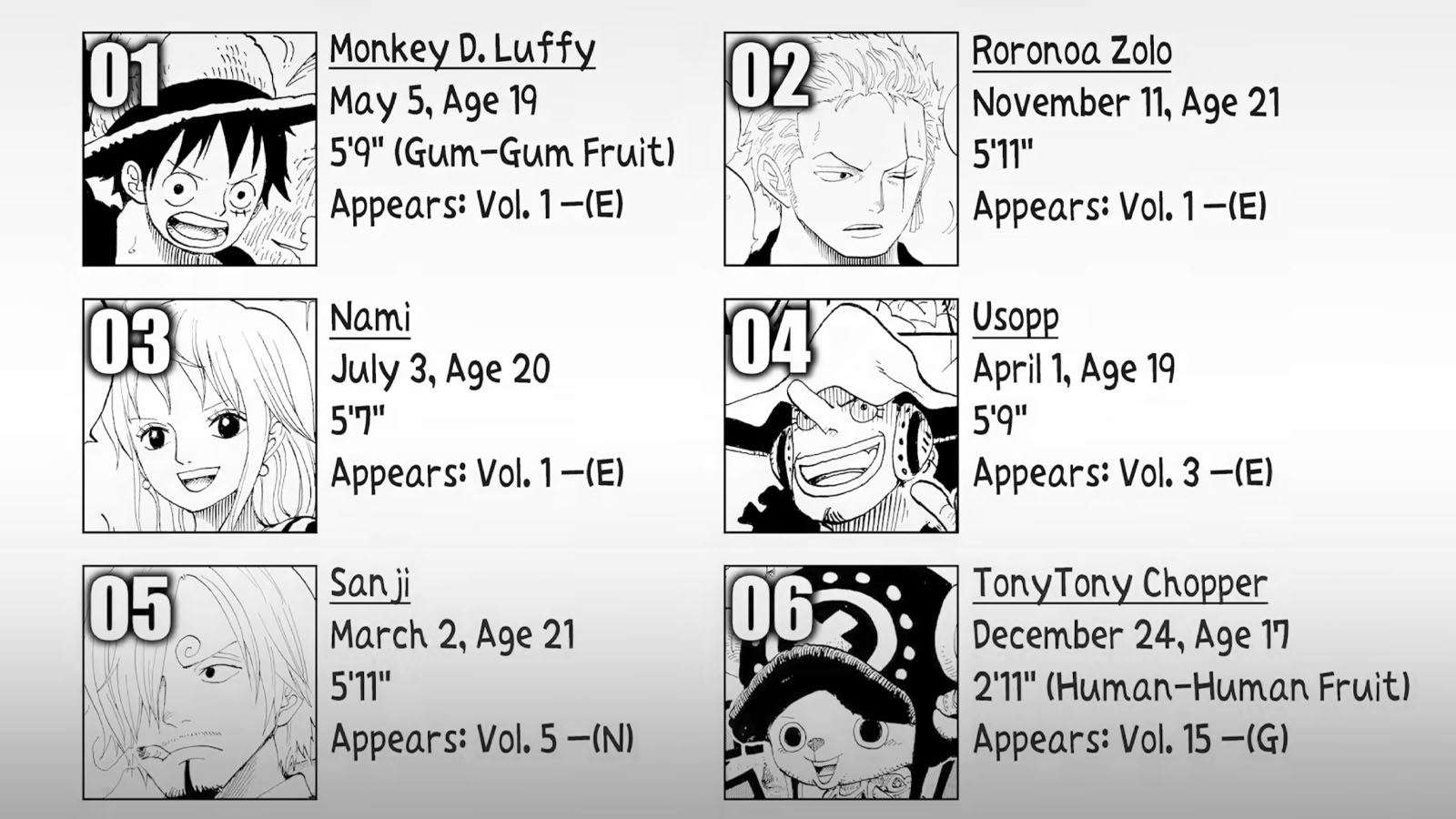
I will admit, I was worried by Danny’s cautionary tale pointing out Cowboy Bebop and things like that. Also, one of my best friends, a year before, told me, “I found this new anime, it has a thousand episodes. I’m watching them all. It’s amazing.” When I got the gig, I realized it was the same show and I told him. He became one of the leading skeptics of “Can you adapt this?”
I was so out of the loop on manga and anime. I only learned that manga is the books and anime is the cartoon on television in my first meeting when Matt Owens corrected me. He was very specific in saying that they wanted to avoid the anime version. They wanted to go from the source, the manga. I had a quick education in what we were working on.
MF: It seems like we have a mixed bag here. Some folks were familiar with One Piece and excited about it, familiar with it and had trepidation about it, and then some, not at all. Whether you knew this world or not, did you take it upon yourself to go in and watch the anime or read the manga? Did you get to know the history of this property that’s been around for over twenty years?
Kevin D. Ross: I caught up with the beginning of the show. I didn’t watch all of the episodes, obviously. I learned enough to know where the story was going. I actually wanted to be surprised when I watched what was happening in the other episodes.
We were editing in blocks. Danny and I had the first block, which included episodes one and two. Then the next editor on, Tessa Verfuss, cut episodes five and six. So when Eric and Adam came on, you guys were the last block, is that correct?
Eric Litman: That’s correct.
Kevin D. Ross: And you were doing episodes three and four. So they all got mixed up. But we were separated by time and it wasn’t like we were doing all the episodes at once or on a rotating schedule. We each had our specific time we were on the show. I didn’t know what Eric’s episodes involved.
Daniel Williams: Speaking to the scale of the show, I also watched a few episodes of the anime to get an idea of our first two episodes. But we were busy once the show started. We shot a lot of days on episodes one and two.
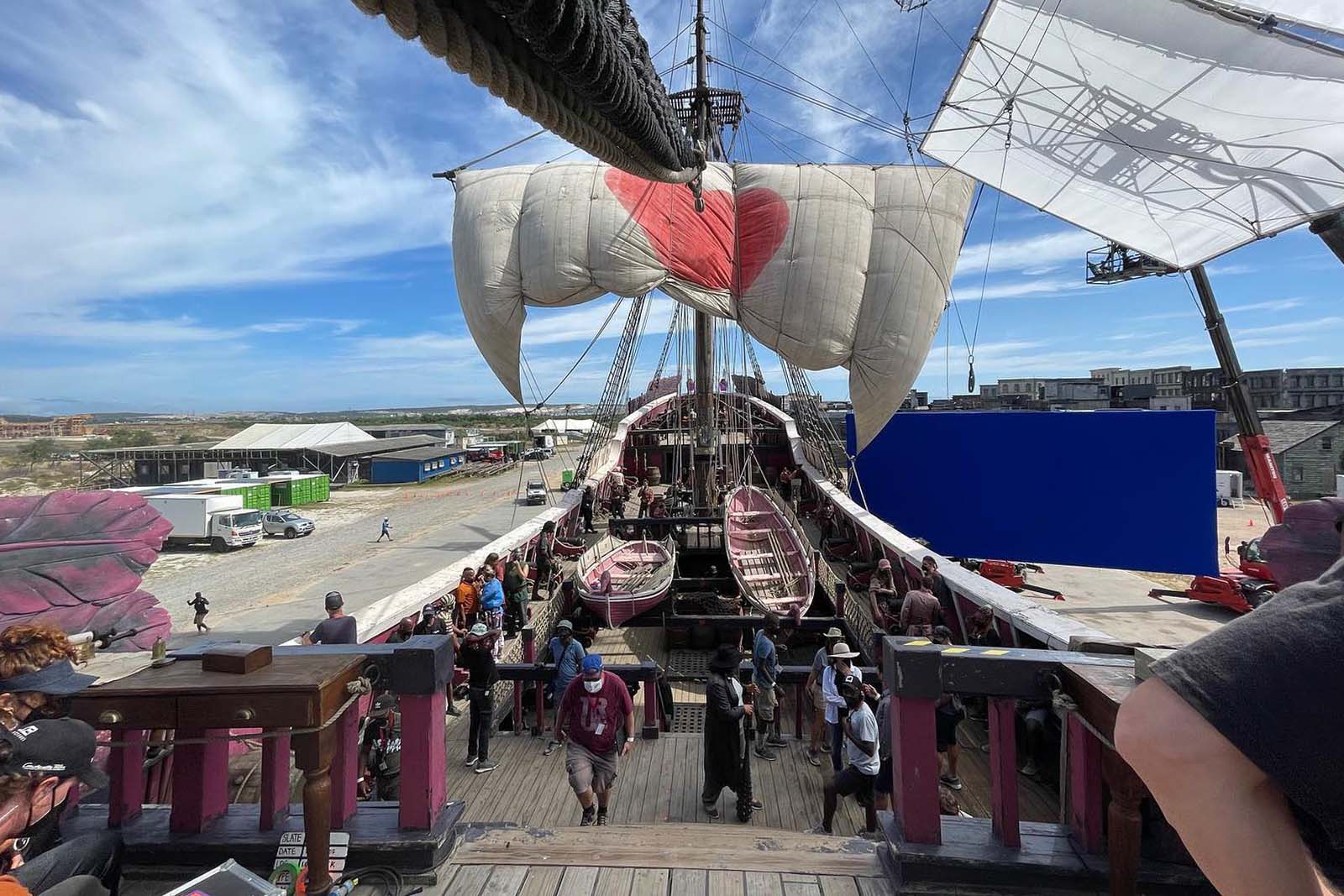
Kevin D. Ross: Just a few. Just a few.
Daniel Williams: Probably the most dailies I’ve ever seen on a television show. We had over two months of footage on just two episodes, which was kind of endearing. We saw they were really going to give it their all. They were shooting the crap out of those scenes. But there wasn’t a whole lot of time to sit back and watch it.
Probably the most dailies I’ve ever seen on a television show. We had over two months of footage on just two episodes.
MF: Danny, I have never heard anybody refer to two months of dailies as endearing. That’s gross.
Daniel Williams: You know.
Eric Litman: We had a lot of dailies on our block. The amount of time we were given to craft these scenes and make them really polished, for me, was a luxury.
I was used to working really fast, getting the show together, and having no time to do what you need to do. With this, I could actually think about what I was doing. I could create options and alts and really explore the material. To have two months was like, “Wow, this is just great!”
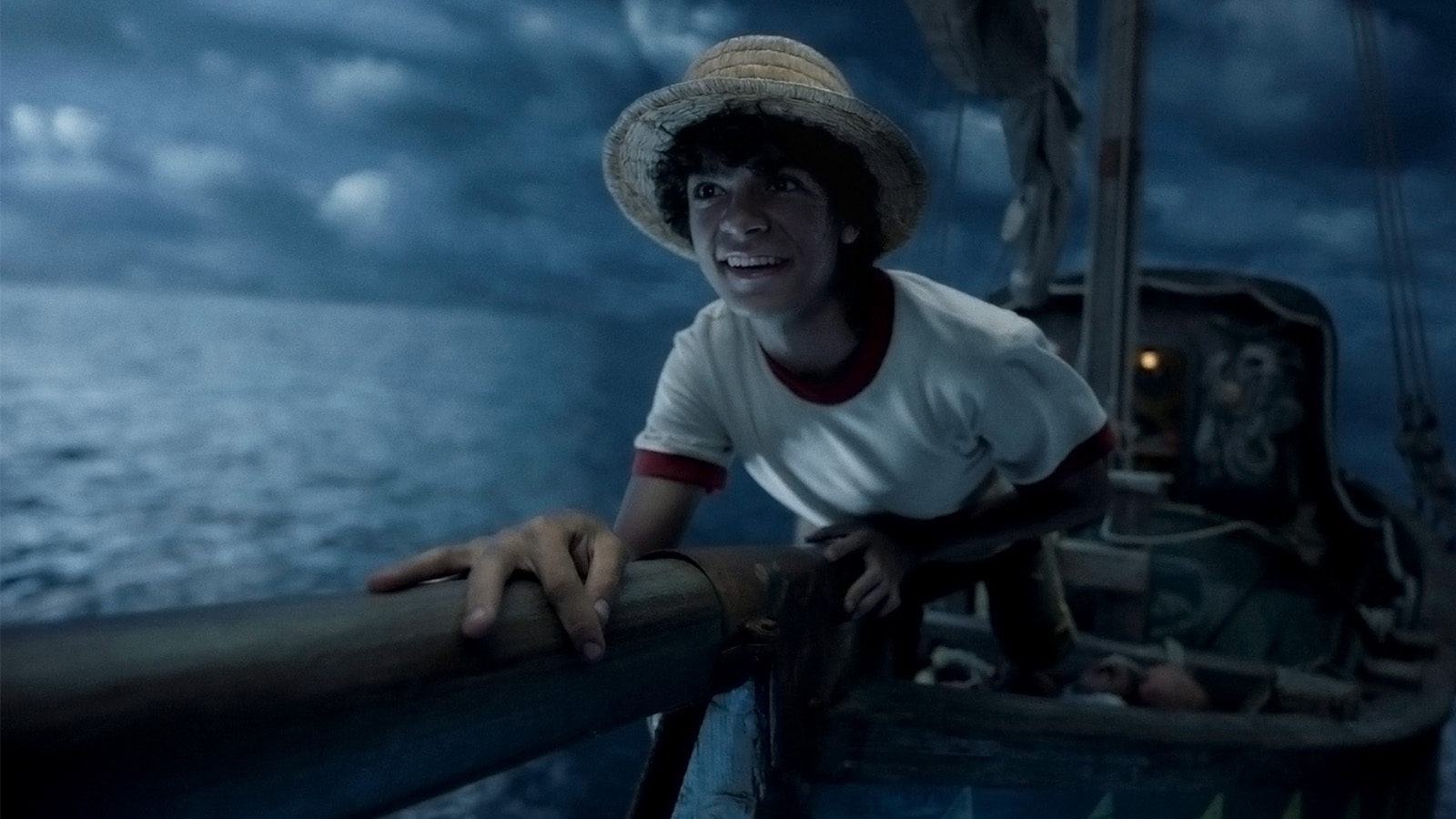
MF: I think the sets were in Cape Town. I think you guys were in LA and then they also shot in other locations. What was the basic workflow of production to post production, considering you guys weren’t on at the same time and were spread out all over the world?
Kevin D. Ross: The reason they were in Cape Town is that studio is where Black Sails was shot. They used the same pirate ships and redressed them. They had the sets already.
Eric Litman: Which was weird for me because I would recognize the sets from the previous show, but now there were clowns in them. That started to throw me.
Kevin D. Ross: It was interesting when we started because we were working with Cape Town and we had to find a workflow. They ingested the dailies there in Cape Town, and we still had to get them in LA to our NEXIS. Danny was working that out with the South African assistant. Tessa started out helping us because she had been working in Cape Town for years. She helped set up the workflow and assisted until her block started.
She was probably on One Piece the longest. She started working out visual effects and assisting for us down there until her block started, when she became the editor on that block. But Danny can explain how they did the workflow between two different NEXIS.
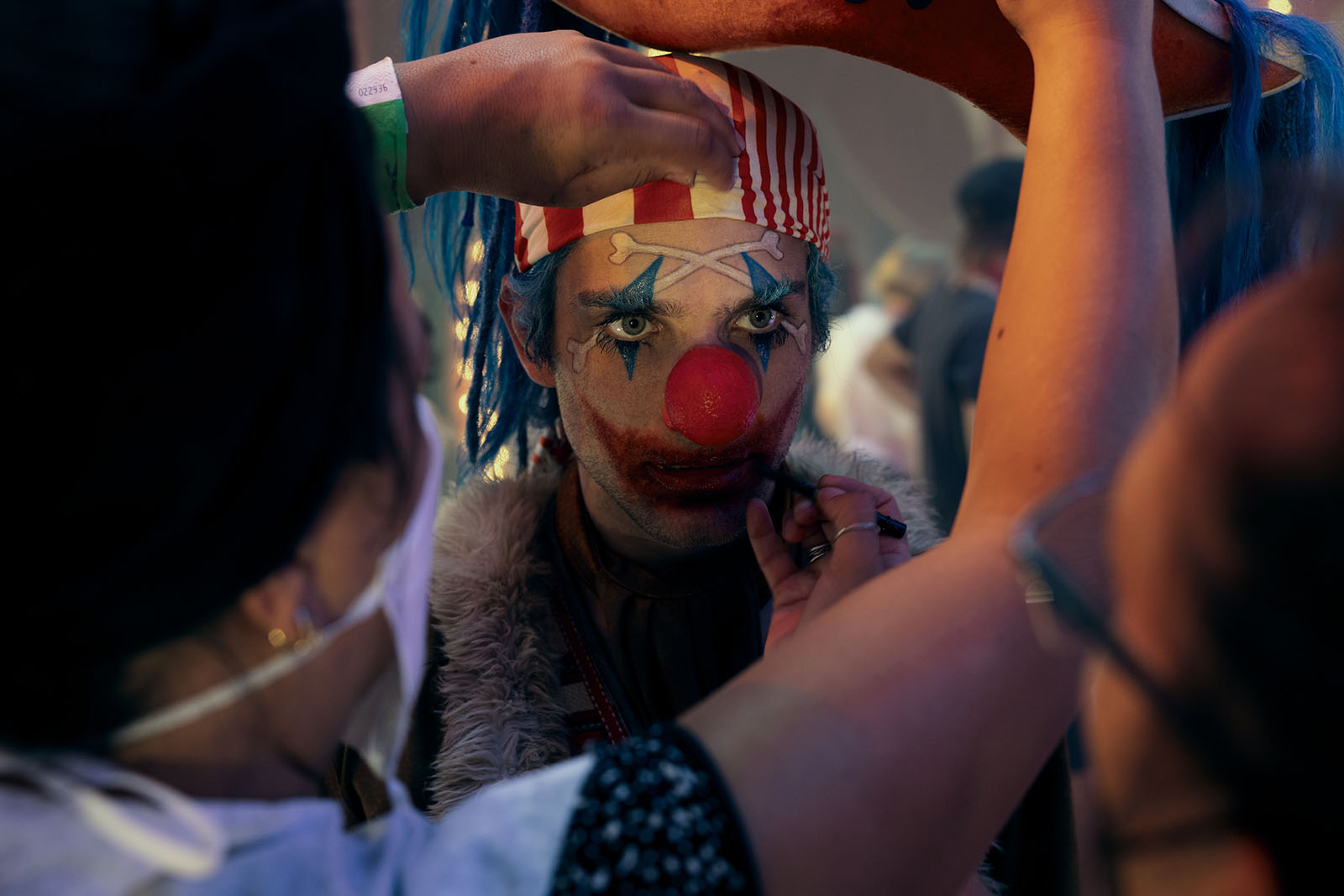
Daniel Williams: Yeah, that was rough. I had two or maybe even three weeks before the first day of shooting, which was probably also the earliest start on any show I’ve worked on. It was a big hurdle to figure out how to sync up the two NEXIS, the storage systems, on both locations. It ended up being not really that useful in hindsight. There was a lot of disaster planning that luckily didn’t come to fruition. It was a lot more complicated than it had to be.
They would shoot the footage there, the assistants would sync it and bin it out, and then they would send that and sync it over to our NEXIS here in LA. By the time we woke up here in LA, because the hours were so different, the dailies would typically be sitting there waiting for us. So, just like any other show, we would grab the footage, get it ready, build the media databases and get going.
Essentially we had a twenty-four hour cutting room.
Eric Litman: Which was great because essentially we had a twenty-four hour cutting room. Adam, and I’m assuming you as well, Danny, still had to do normal assistant work, but it cut the workload down significantly. Now I could start looking at Adam and say, “Do you want to take a crack at the scene?” or “Do you want to do some music?” or “Really go to town on the sound” which Adam did and I’m pretty sure Danny did as well. It afforded us an opportunity to really look at the material and explore it in-depth.
Daniel Williams: And shout-out to the South African crew. You never know what you’re going to get with an international crew when you don’t have a normal dailies house like we’re used to here in LA. There were almost no issues. Everything was synced correctly and they were on time. They were extremely helpful over there.
Adam Pearson: It was very streamlined and very consistent.
Kevin D. Ross: I heard it was more difficult for them, because they had to work on local drives because of the security of their internet in South Africa. They had added steps when they were working in Cape Town.
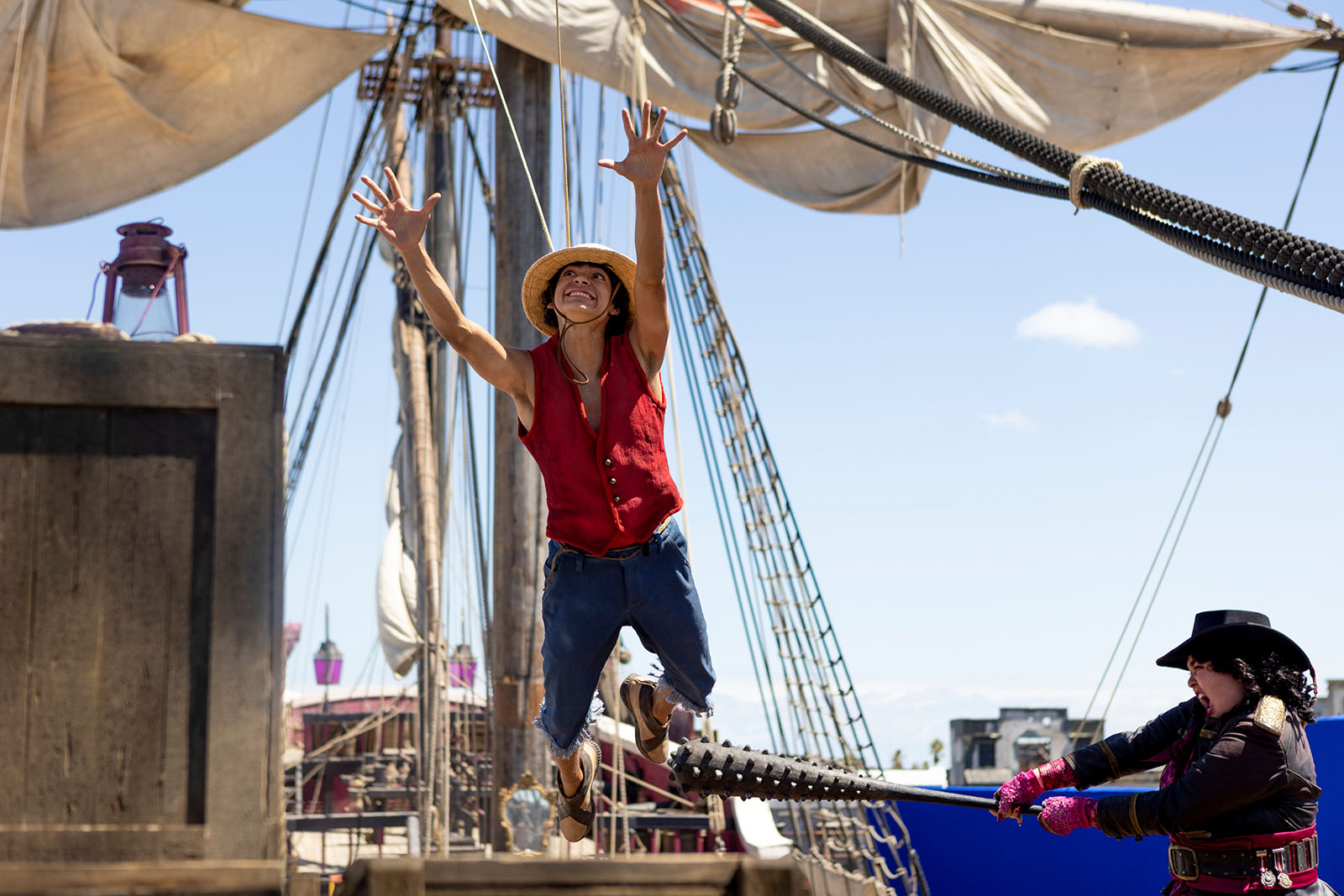
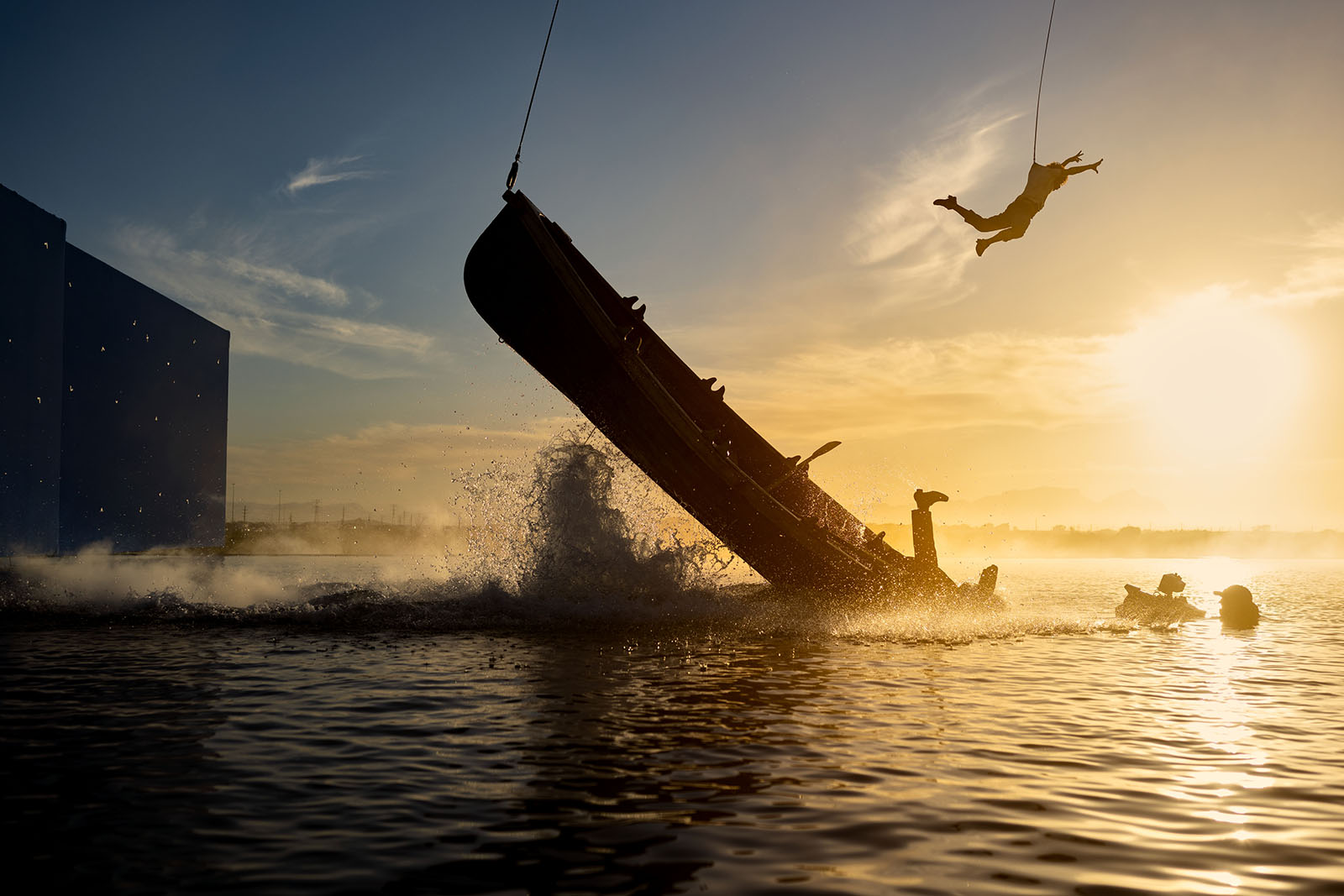
MF: Adam, as someone who’s starting as an assistant and then leaning into co-editing duties, what is your role in terms of establishing what the cutting room workflow is for Eric?
Adam Pearson: When you’re working with individual people, everybody has workflows and a lot of it has to do with establishing space for those workflows. What keeps work moving is having things set up in a way that you can slot into very easily. Eric and I had the opportunity to set that up on the pilot.
What keeps work moving is having things set up in a way that you can slot into very easily.
This is the first time I’ve had to set up a project workflow without ever actually being in the room and setting things up on the computer. We were able to log in–we were using Jump to network everybody together. I was able to get in and set those things up fairly simply, but it was kind of novel to have to do it from halfway across the world.
MF: Yeah, I would think.
Adam Pearson: There were a lot of screenshots and a lot of FaceTimes.
MF: Well, you made it work. Speaking of making things work, you are definitely going to have the rabid One Piece fans staring you down. But you also have people who are completely new to this world. They’re going to need a little hand holding.
Let’s talk about the first episode. What was the approach you took to introducing people to the world of One Piece? What kind of different iterations did that first episode go through? I’ll just stop right there and let Kevin finish laughing.
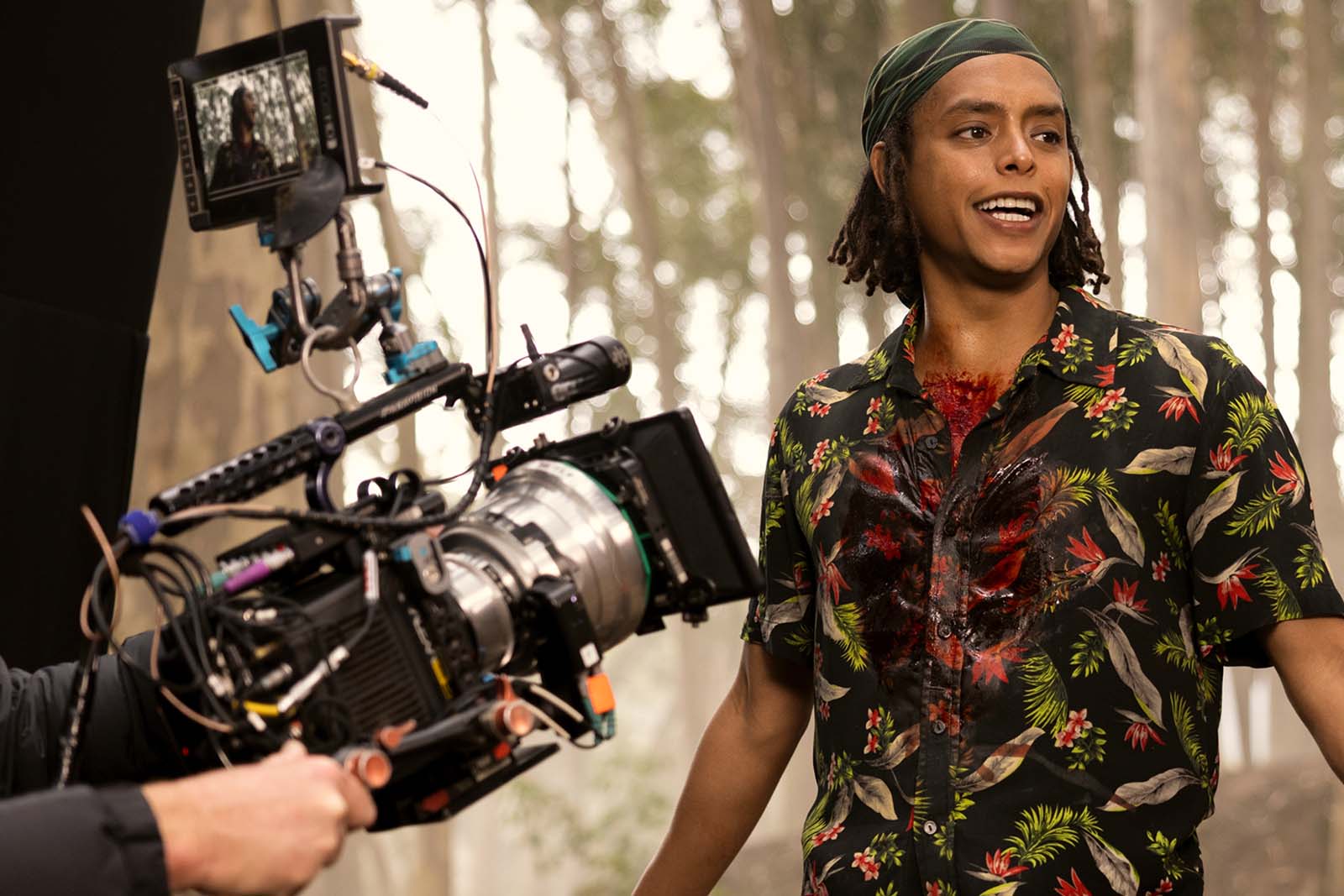
Kevin D. Ross: As someone who wasn’t aware of the world, we relied on the script and the vision that Marc, Matt, and Steve had, our director and producers. We were going for that and Marc Jobst, the director, had a very clear vision of how he thought all the scenes and camera angles should be.
But I did worry. Danny and I talked about it. We wondered, “Will this be accessible to someone who isn’t aware of the show?” Because Luffy, the main character (played by Iñaki Godoy) is basically rubber and he can stretch.
Even when we were picture locked, we never had any type of basic animatic stretching stuff. I temped in some stretchy arms using the title tool. I painted long arms and then I would 3D them to move. Those were my efforts with the visual effects.
We had to trust that the audience would go along for the ride.
We had to trust that the audience would go along for the ride. A lot of it relied on how good the visual effects were gonna turn out. Luckily, when we saw the show air, we said, “Hey, they turned out great!” We were done last September, so they spent another nine or ten months doing the visual effects on the show.
I was laughing earlier about iterations. We had many iterations of our episodes as we went. But when we finished, we thought we were locked, except for the opening of episode one. There’s always going to be discussions about how to enter the world of One Piece.
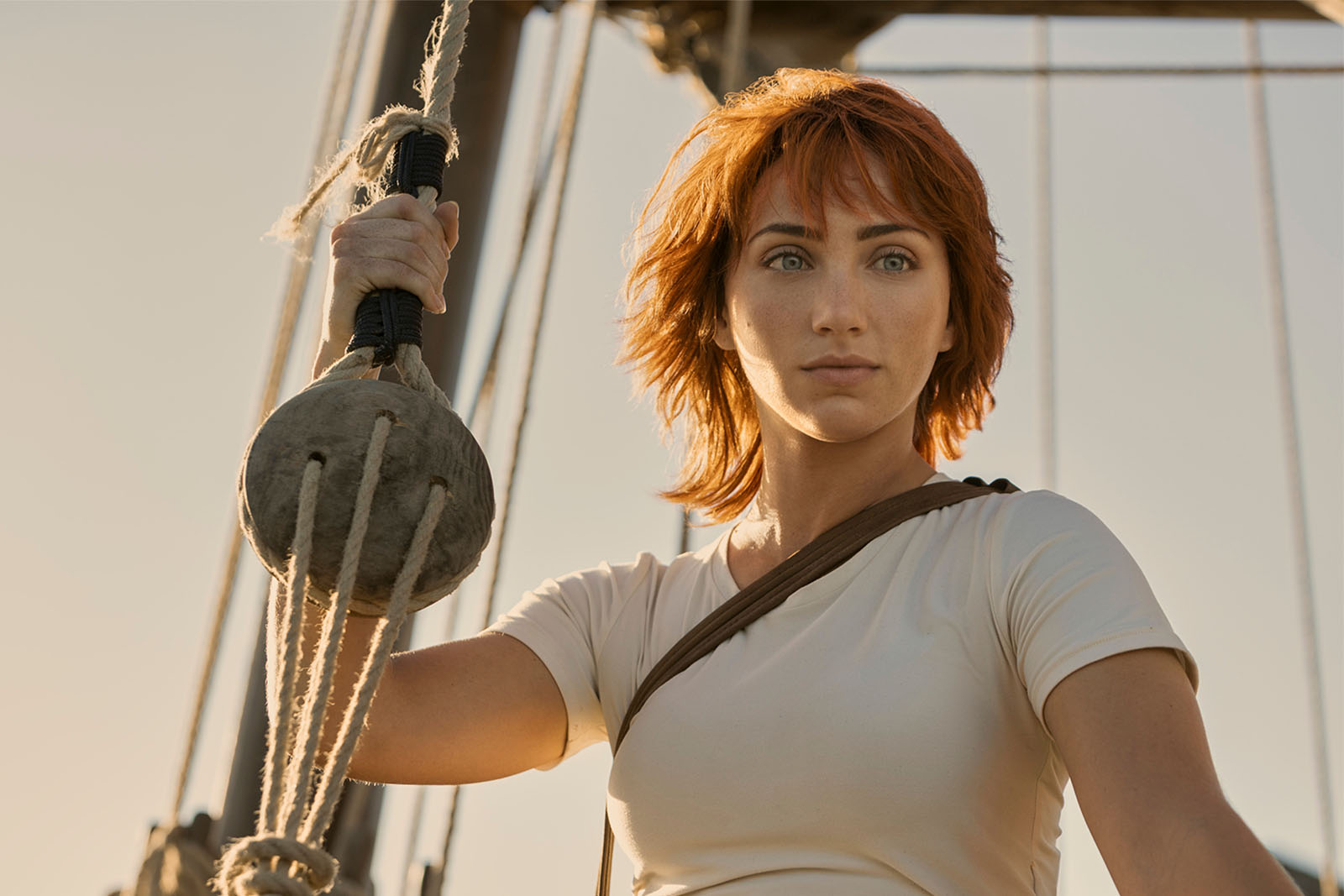
Danny and I had already stayed on for two extra months and we had to start work on another series. When we left, we thought the beginning of episode one was still open for interpretation. We were wondering how they were going to change it. At that time, Tessa had taken over, saying she was going to finish whatever they shot, and they cut a new version.
But over the next nine or ten months, other people had feedback and ideas and changes. Then it opened up again. By the end, Eric had re-cut the opening of episode one to a really cool opening, which I saw and said, “Darn! I wish I was there for that. That was awesome.” Then, as visual effects came in, Eric got to actually see things like, “That doesn’t time quite right now. I can shorten that shot and I can change the scene.” It became a collaboration, but months apart.
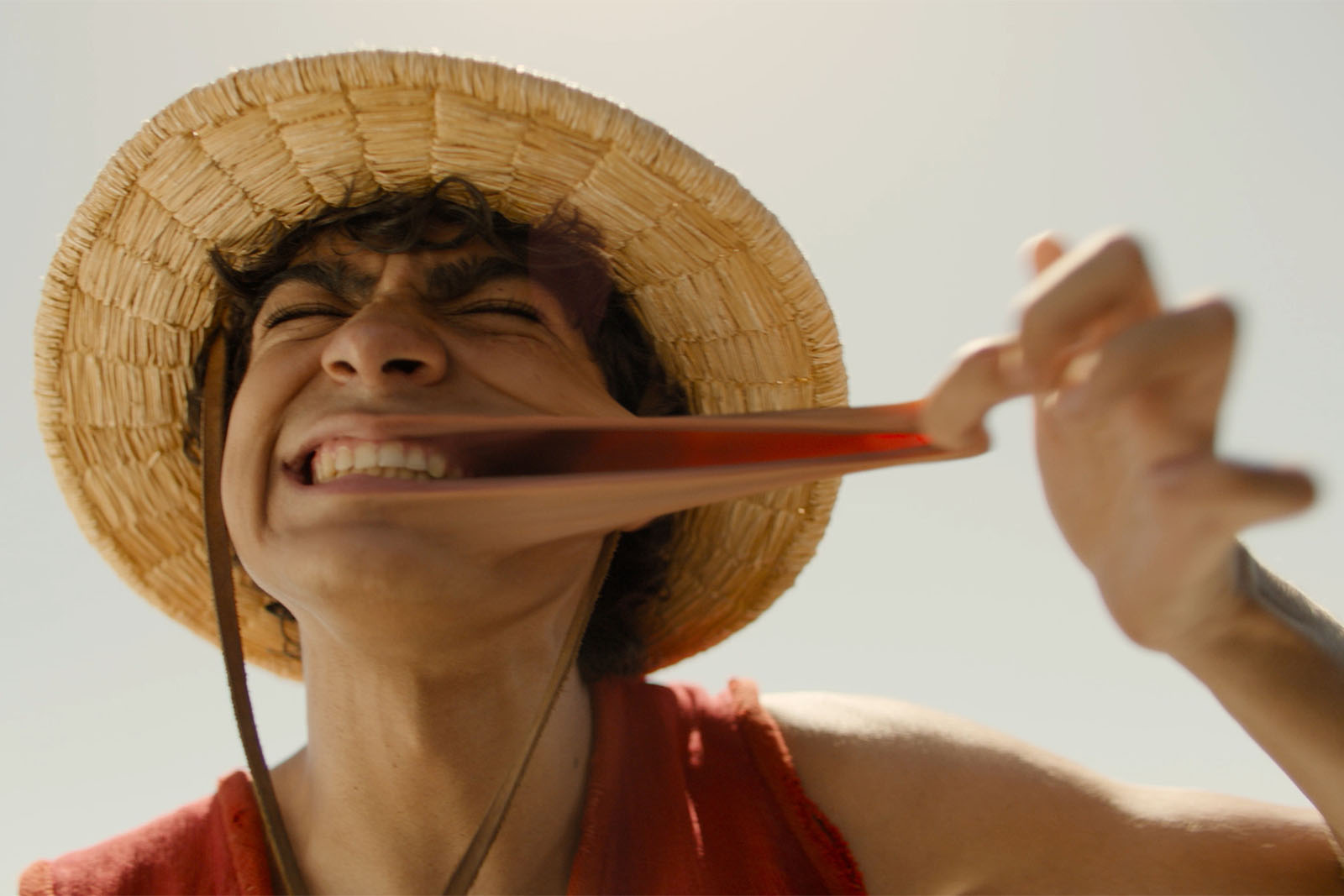
Eric Litman: It was pretty cool when I eventually got my hands on the pilot, which I absolutely loved when I first saw it. I thought everybody, Tessa and Kevin and Danny, and Joe Kenzer, did a terrific job. But the advantage I had was I was able to actually get some pretty good temps from the visual effects team. We were able to have a pretty good idea of what we were looking at.
Like Kevin said, every pilot, every premier always has some sort of issue with the opening. We were able to discuss that. We had the visual effects team, Scott Ramsey and Victor Scalise. I was able to discuss with them, “Hey, what if we had this for the opening?” which they would quickly temp out for me, I’d get these pretty cool previs mock-ups, and that would start a conversation. The previs would become something else, and it was a way to springboard, ultimately, to what we went to.
Daniel Williams: As for appealing to people who are not already One Piece fans and not having visual effects in the beginning, one of the things that the director, Marc Jobst, said early on was, “There’s a lot of action. There’s gonna be a lot of visual effects. But the story here is about the characters.”
There’s a lot of action. There’s gonna be a lot of visual effects. But the story here is about the characters.
He was very deliberate about putting in these moments of character beats throughout the action scenes, and all these little bits cutting to Luffy and him making his small joke or whatever. By the time we got done with our first editor’s cut, Kevin and I looked at each other and said, ‘This feels pretty good. We’ll see what they say.” Even without all the big visual effects, it felt like it was working.
Adam Pearson: That also speaks to the accessibility of the story in general. That is the core of it, I think. The meat of the show is those relationships, those moments, those character things.
The story is accessible to fans and non-fans alike, and the hook of the show is the world itself, and the characters. I think that is very clear. It’s one of the reasons why people who aren’t familiar with this from the jump are able to slide into it.
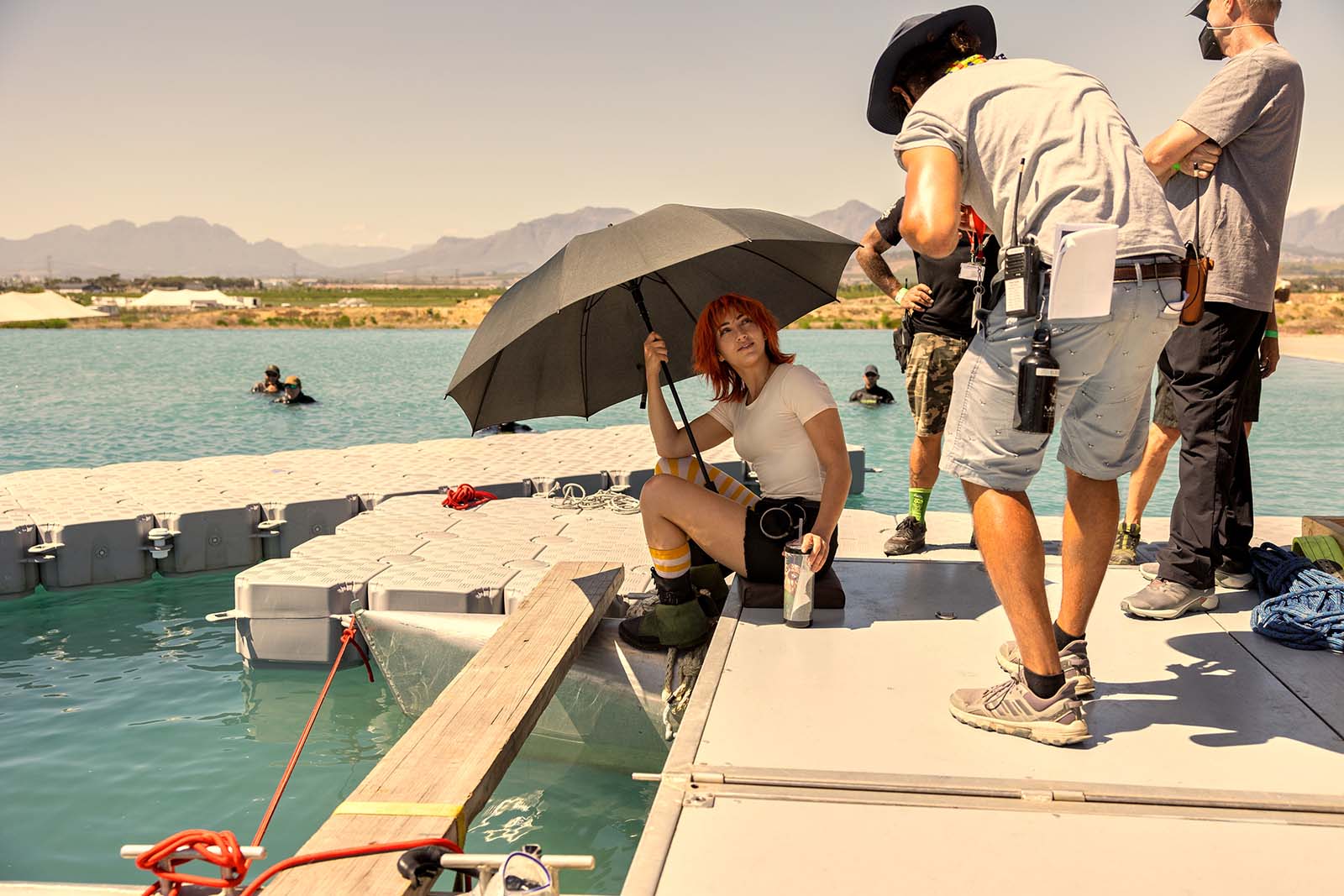
I’ve heard glowing reviews from people who didn’t think One Piece was something they would be interested in at all, because by nature the show is exceptional and outlandish. But the extraordinary parts are in the background. The substance of the show is the story and these characters. It’s about who these people are and how they interact. I think that goes a very long way towards getting people into it and giving them a place to have a foothold.
MF: There are a few choices I wanted to ask you about. You start off episode one with Ian McShane (as the Narrator) doing a voice over, which is great. But then that’s it. We don’t go back to that. Ian drops by for an afternoon, records his voice over, and then he’s gone. Was there ever any discussion about having more voice overs throughout the series?
Eric Litman: When we were doing that opening, one of the big issues we were trying to figure out was, how do we establish this world? We were trying to figure out world building. Is this Earth? Is this not Earth? Are these aliens? Where are we? We tried to do that with visual effects, which we ultimately did, but we still were struggling with that opening. How do we explain this?
Is this Earth? Is this not Earth? Are these aliens? Where are we?
The idea was, “Hey let’s put a little voice over here. Let’s try to explain, briefly, what this world is, so we can just get into it. One of the great talents that I had in Adam was that he had an acting background. He did terrific voice overs, as I discovered during my show. I would have him do temp ADR all the time, which I have to tell you was a blessing. I am not good at that.
Sometimes we would get notes on Adam’s V.O. because it was so good. “Hey, do we have this or that? Can the actor do this?” and I had to say, “Well, that’s Adam!” Getting back to the opening, we did do a lot of temp ADR, which ultimately Adam was very helpful with.
Adam Pearson: I’m glad he had confidence in that ability. The first thing that he heard me do as ADR, if I’m not mistaken, is in the pilot. There was an automated voice that was extremely monotone, and intentionally so. It was supposed to be very dry and very artificial. I did the recordings and he said, “That’s pretty good.”
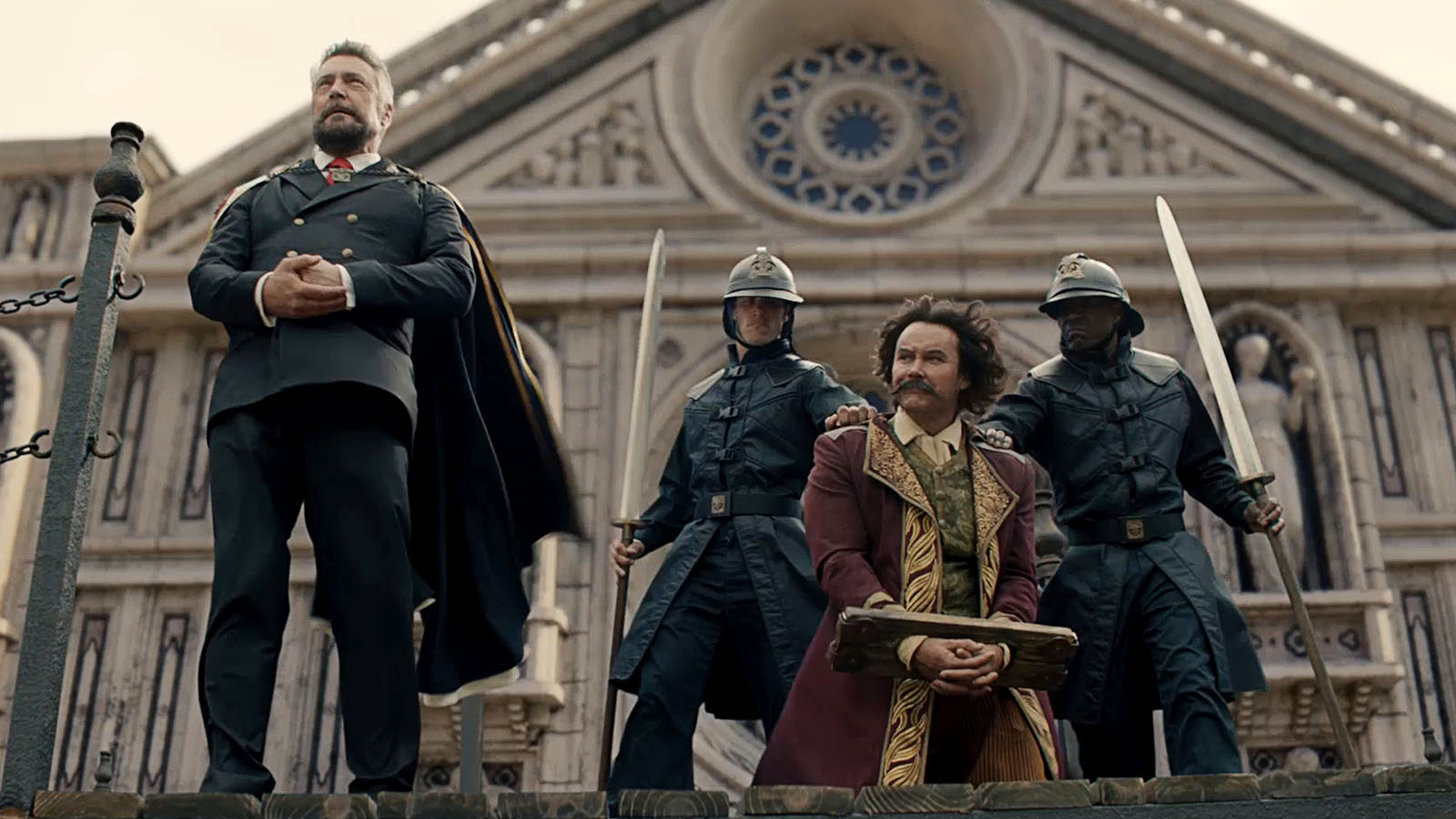
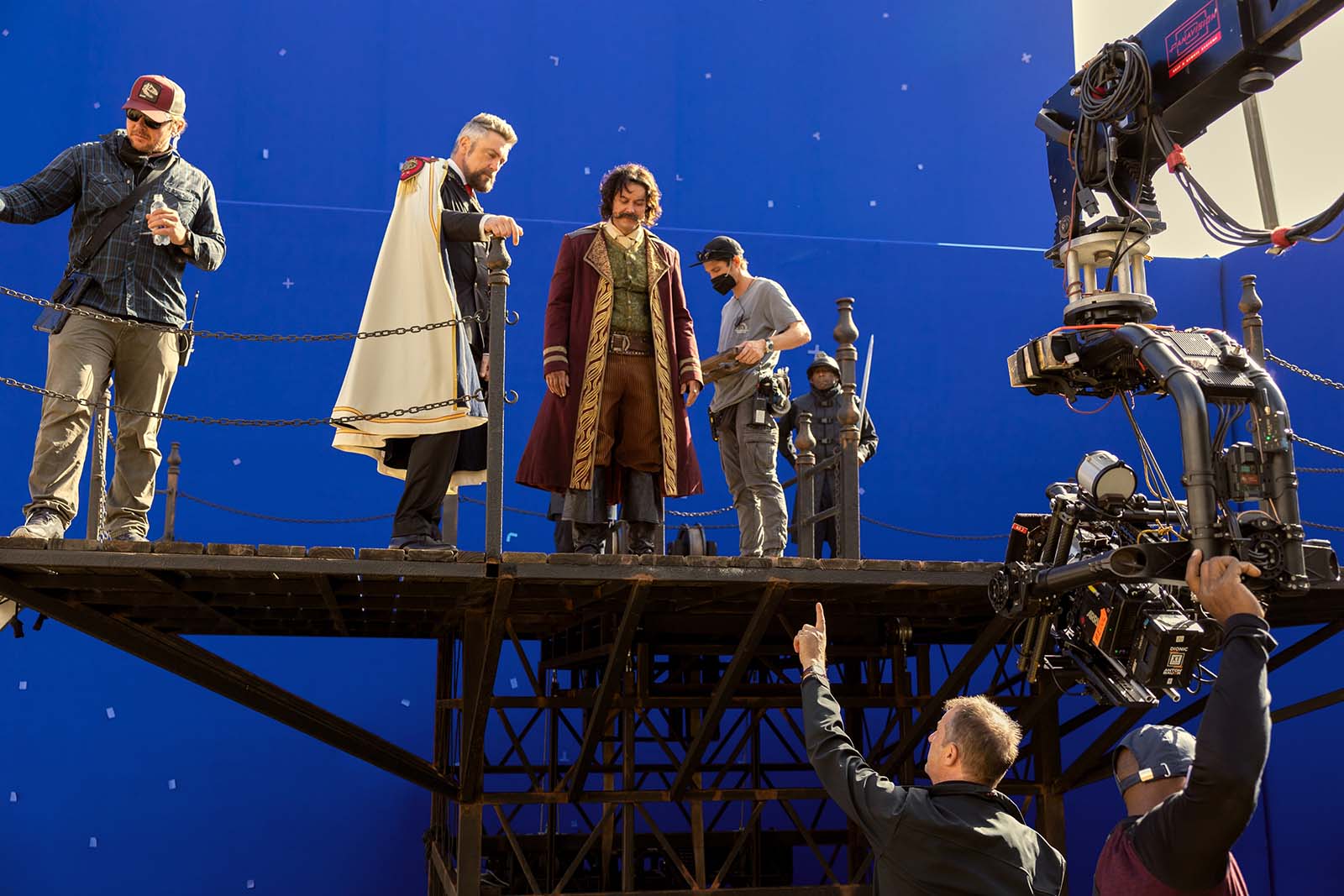
MF: Something else I wanted to ask you about: as Gold Roger (played by Michael Dorman) is being executed, we’re seeing closeups of specific people in the crowd. It almost feels intentional. I couldn’t tell, because I was watching the show for the first time, “Is that a younger version of him that I’m seeing in the crowd?” Did you go back later to plant some Easter eggs with those people in the crowd? It really felt like there were a lot of choices being made there.
Eric Litman: There were a lot of choices. There was a lot of footage, and a lot of reshoots on top of reshoots to really hone that scene and get those Easter eggs correct. There was a lot of discussion about that. The Easter eggs that you’re seeing there are definitely delivered.
Kevin D. Ross: We had the Easter eggs in the original shoot, but they were set up with specific younger versions. But in the version that came out, they had been reshot.
Daniel Williams: It was always intended to have those Easter eggs in that crowd.
Kevin D. Ross: Two nights before it came out on Netflix, they did a big show at the Santa Monica Pier. They premiered the first episode and hundreds of diehard One Piece fans were there.
Just to hear their reaction when they saw those Easter eggs. They were yelling, “Oh my God!’ and you could hear the gasp and yells and the cheers when they even saw just one little snippet of somebody. That made it all worth it, I think.
Eric Litman: I felt like that was “Mission Accomplished” when I heard that.
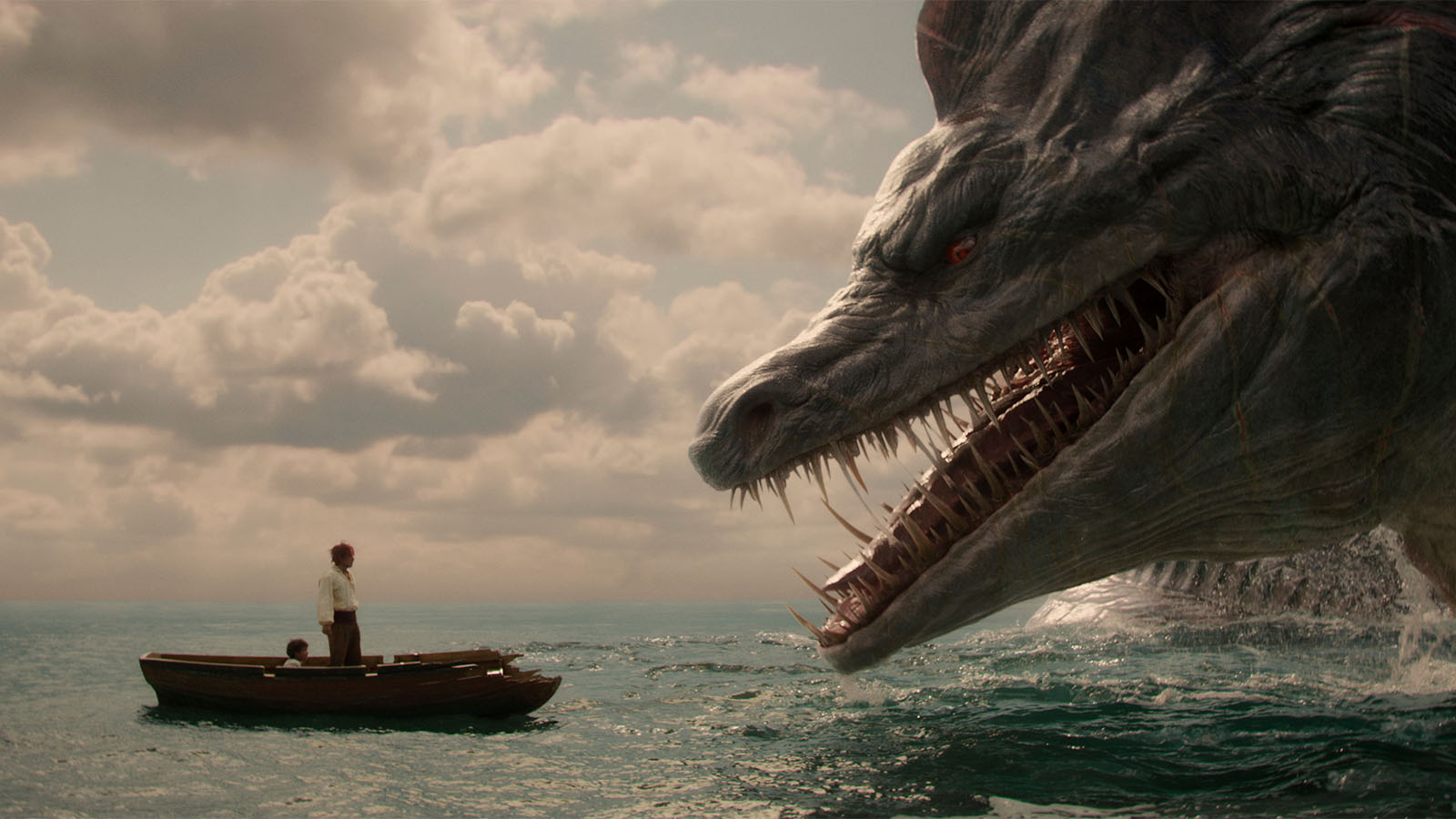
MF: What does the world of One Piece look like as you’re building it up from script to finished product? Storyboards, animatics, previs… There’s effects in just about every shot. If anybody was keeping track, I’d love to know how many VFX shots there actually were in One Piece.
Adam Pearson: Episode one has at least two hundred and fifty.
Kevin D. Ross: I want to backtrack on something I said. When I said we didn’t have any type of visual effects, I was talking about actual rough visual effects.
Danny and I talked about the clown fight in episode two, when he breaks apart into pieces. We needed these pieces to spin around, and then the visual effects editor would make temp pieces, but they were using animattes and all sorts of things to make it work. I didn’t have a previs version, except Danny had the sea creature, Lord of the Coast.
Luckily he had those when he was cutting. That was one of Danny’s scenes, and at least he had some basic versions instead of my painted, sock puppet version.
Daniel Williams: Kevin made, in the Avid paint tool, a wonderful sock puppet that we used as the Lord of the Coast, for eyelines and as placeholders. I hope that one day that makes a bonus content link, because that was just a fun part of the process.
Kevin D. Ross: Yeah, it was awesome.
Daniel Williams: If memory serves, Kevin, in episodes one and two, we did also have pretty extensive storyboards for our big fights. For the Axe-Hand Morgan (played by Langley Kirkwood) fight and for the Buggy (played by Jeff Ward) fight in particular, there were extensive storyboards that really helped. It’s so hard to do these scenes without visual effects, especially with Buggy. You have to really know what each shot is meant for.
Kevin D. Ross: We had stunts previs for some of the fights. That was great because they tried to mimic the camera angles with the stunt. You knew where the shots were supposed to be placed.
Adam Pearson: They gave you a roadmap of all the choreography, really.
Kevin D. Ross: Yeah. So you knew, “Okay, I don’t know where this piece really goes, but oh, here I see. I see what they intended.” Sometimes you had to change them, but it worked out really nicely.
Eric Litman: I had storyboards for the board game that they were playing in episode three. Everyone made it sound like this was a really complicated game. I was looking at the storyboards going, “I think I’m even more confused.”
Once I watched the footage, I was able to make sense of the storyboards. Once I had cut that scene, they said to me, “Hey, everyone is doing split screens by this point in the show. How about we do a split screen on the board game scene?” I went, “Oh, okay… Let me figure that one out.”
MF: It’s interesting that you brought that up, because I wanted to ask you about establishing looks for the show. It sounds like it’s impossible with One Piece, where you were all staggered. But at some point somebody came up with the idea of, “I’m going to do split screens” and now that’s part of your visual language. How do you all come together and establish the path for the show?
Eric Litman: I had the benefit of being the last one on. Everybody else had to go through the ring of fire. One of the questions I asked early on was, “What is the tone of the show?”
Really, I was asking, “What is the sound? What is the music, the score, going to be like?” The word I was given was “youthful tension”. They wanted things to be paced up and they wanted to have a youthfulness to it. I noticed that Thomas Newman was being used a lot for temping the show. That gave me a guideline. He has a lot of ups and downs and waves. That helped me dictate the pace of the show. I used that as my guide to try to figure out the pace of the show.
Daniel Williams: I think that’s where the showrunners come into play. As we’re working on our episodes with Matt and Steve, after they had gone and worked on another episode, they might say, “We tried this there and it’s working. Let’s try to work it here” or “Go talk to so-and-so about this effect that they’re using. See if you can incorporate it in your episode.” There was a little bit of that coming from Matt and Steve.
Kevin D. Ross: When we started, it was very specific that every block of episodes was going to have a different musical build. That was the talk at the time. They were even talking about having a different composer for each block. Eventually, they didn’t do that. But we were thinking, “Our block is a certain way, episodes three and four are a certain way, five and six, seven and eight.”
We were on our own. At the time, I wasn’t sure what type of temp music to use. Our director was feeding me things that he really wanted to include, even though the producers didn’t want it. They would say, “No, that doesn’t work.” There was a difference of opinion on the music. But we were thinking, “It’s just temp. We’re good. We’ll change it.”
MF: Is there a default pirate temp music?
Adam Pearson: Not Pirates of the Caribbean.
Daniel Williams: From day one we were told no Pirates of the Caribbean.
From day one we were told ‘No Pirates of the Caribbean.‘
Kevin D. Ross: The problem was that we were directed to use The White Lotus, and we did. I thought it worked, but I had never seen The White Lotus at that point. Then we got the feedback from Netflix: “No more White Lotus music!” I didn’t understand why, because I thought it really worked with the scene. But when I saw White Lotus, I thought, “Oh yeah, that doesn’t fit our show.”
Daniel Williams: In fact, I think the only scene where The White Lotus temp stayed, until we got composer tracks, was the Zoro (played by Mackenyu) fight scene. The Zoro and Mr. 7 (played by Ben Kgosimore) fight was the only one where The White Lotus temp worked really well. We kept that all the way up until Sonya Belousova and Giona Ostinelli gave us some options.
MF: Speaking of those options, I read that they were composing scores for each character. Nami (played by Emily Rudd) would have a theme, Luffy would have a theme. So I’m just wondering, with all the iterations you went through, when did they get integrated into the process? It seems like they almost need to be involved earlier than they usually would be.
Kevin D. Ross: They were brought on early for our block, for episodes one and two. And by early, I mean a couple of months, because we were still shooting.
They weren’t saying, “This is a Luffy theme.” They just gave us a temp cue for the scene itself. For example, we had a great scene where Young Luffy (played by Colton Osorio) is running through, stealing meat, running up to Shanks’s ship. I loved that scene. It was a chase with the Marines. They actually did a nice little cue with a fiddle. It was great. I loved it, but it got cut out. It didn’t make the final cut.
Daniel Williams: Episode one was long.
Eric Litman: Episodes three and four were heavy on Usopp (played by Jacob Romero), Kaya (played by Celeste Loots), and Zoro. We had a lot of scenes that were specific to them. I consider myself to be pretty good at temping with music, but these were long scenes. They were challenges. I got some moments here or there, but somebody said, “Why don’t we send these to the composers?” which was a new territory for me. I thought, “Wow, I’ve never done that before.”
When I got it back, I was thinking, “Wow, they elevated these scenes to a whole new level!” It was really making things work, especially the part with Zoro climbing out of the well. When they did that, I had to shoot them an email saying, “You made me look good.”
Adam Pearson: Zoro in the well and the interplay between Kaya, Nami, Usopp, and the guys in the kitchen. Those were very complicated scenes, bouncing back and forth between one another.
Eric Litman: They were originally linear scenes. Somebody at Netflix, or maybe one of the executive producers, said, “Can we try intercutting these scenes?” To the show’s credit, they gave us lots of time to figure it out.
Adam and I would look at these scenes, like Kaya and Usopp when they’re talking to Luffy and Nami about their love for each other, or hiding their love for each other. We were playing with that scene and Adam and I would sit there and go, “Can we change this line here and make Usopp say this? Or maybe Kaya can say this, and that will get us to where we want to go.”
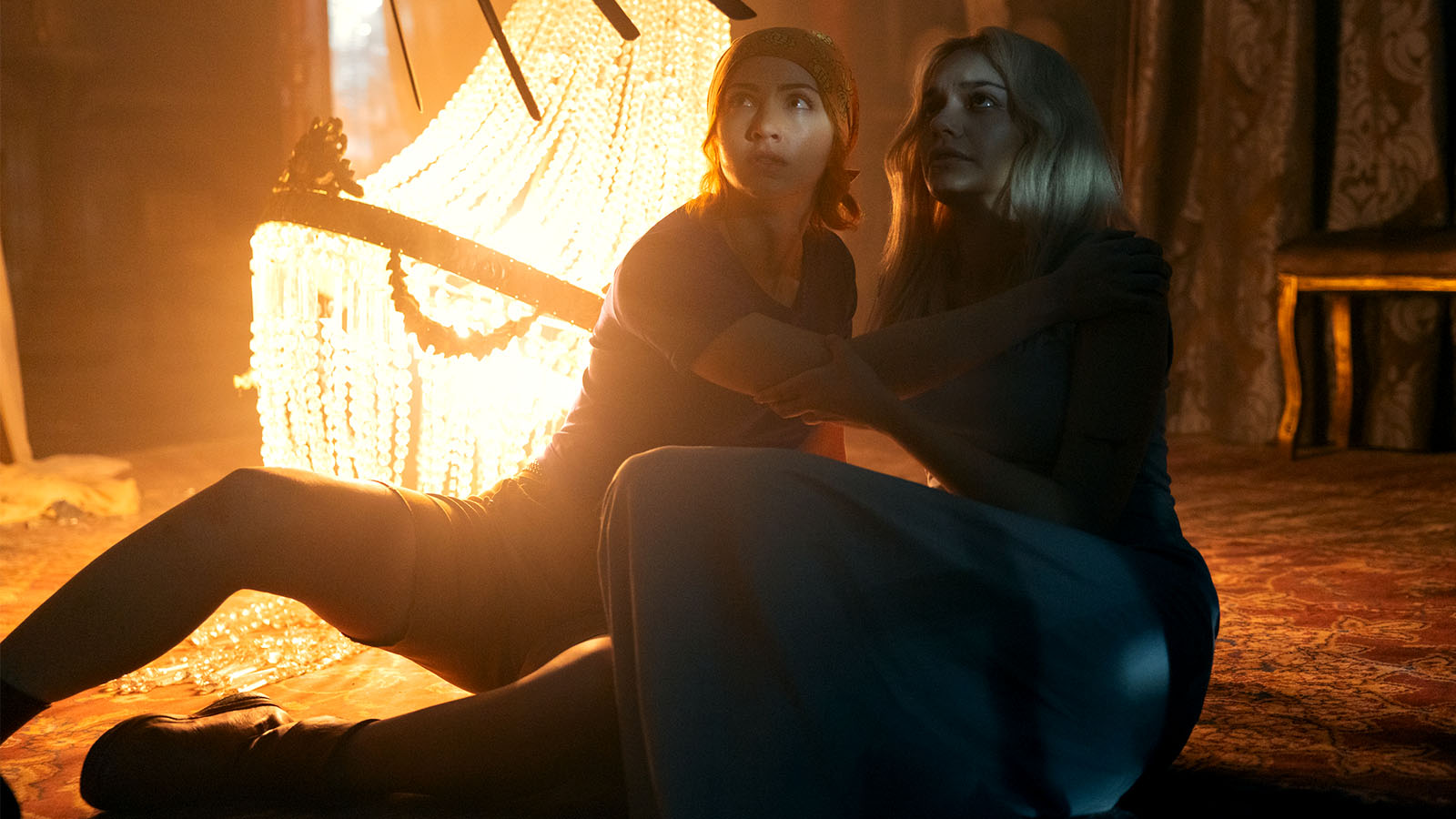
Daniel Williams: If I didn’t, I should mention Zak Millman. We had Zak from JTN Music as our music editor. They worked with the composers, Sonya and Giona. Zak Millman would do some really good music temps for us. Once we had a scene locked in, if it was a bigger scene, we would throw it to him to mix a temp track. That was really useful, especially during the first episode.
It was nice to be on a show that allowed us to have someone to work on our temp music.
Kevin D. Ross: It was nice to be on a show that allowed us to have someone to work on our temp music. That was really great. First, I’m writing down, “Call Adam for any ADR.”
Danny and I have worked with Sonya and Giona before. This was our third show with them, so we knew what we were getting. We were excited when they were up for it. We kept pushing. “You guys need to get them. They’re going to be great.”
MF: We’ve established that the paint tool and the title tool can really come through for visual effects, for creating sea monsters and rubber arms. Are there other little tricks that you use, like Animatte and Fluid Morph, to push the temp effects further?
Adam Pearson: Animattes are all over Kuro (played by Alexander Maniatis). The thing with Kuro is that we were not going super far with his effects, but we had to sell them. It was very specific. We didn’t want them to be over the top. We wanted them to be as they ended up appearing in the show. They’re very subtle, but they’re still dynamic.
One of the things with having to temp that effect is, you would have to use a combination of an Animatte and a blur to get his little distortion, where he starts moving too fast to see.
There’s also his fight with Luffy. This is not only an Animatte trick, but also just a general art trick, if anybody ever has to do it. When he’s crossing the frame right, he’s not there. Iñaki is reacting to getting cut, but Kuro is not in that scene.
What I ended up doing was some sleight of hand. His outfit is black and white, right? So you use a combination of the Animatte tool and the Paint tool, and you can literally take a big black circle and a little white circle and blur and slide them a little bit. Then you flip them across the screen, just for an indication. If there’s one trick I used, it was that. I used it to hint at how he was moving, because the way that we wanted to portray that was so specific. You couldn’t get too big with it.
Eric Litman: I think you actually added a few shots when Kuro slashes Luffy in the mansion. You came up to me and said, “Hey, I did this, but it really wasn’t planned. What do you think?” I said, “I think it’s great!” and it ultimately made it. You did that a number of times, and ultimately made it into the final show.
Daniel Williams: We used a lot of small speed ramps as well, at least in episodes one and two. We used them during some action scenes where maybe the choreography was a bit slow. We either did a small speed ramp in the middle of a movement, where you can kind of disguise it so it doesn’t look sped up, or we took frames out of, say, the range of a punch so that the fist moves just a bit faster. We took out a frame here or a frame there. Making these small cuts can make the movement go a lot faster, and it still looks fluid.
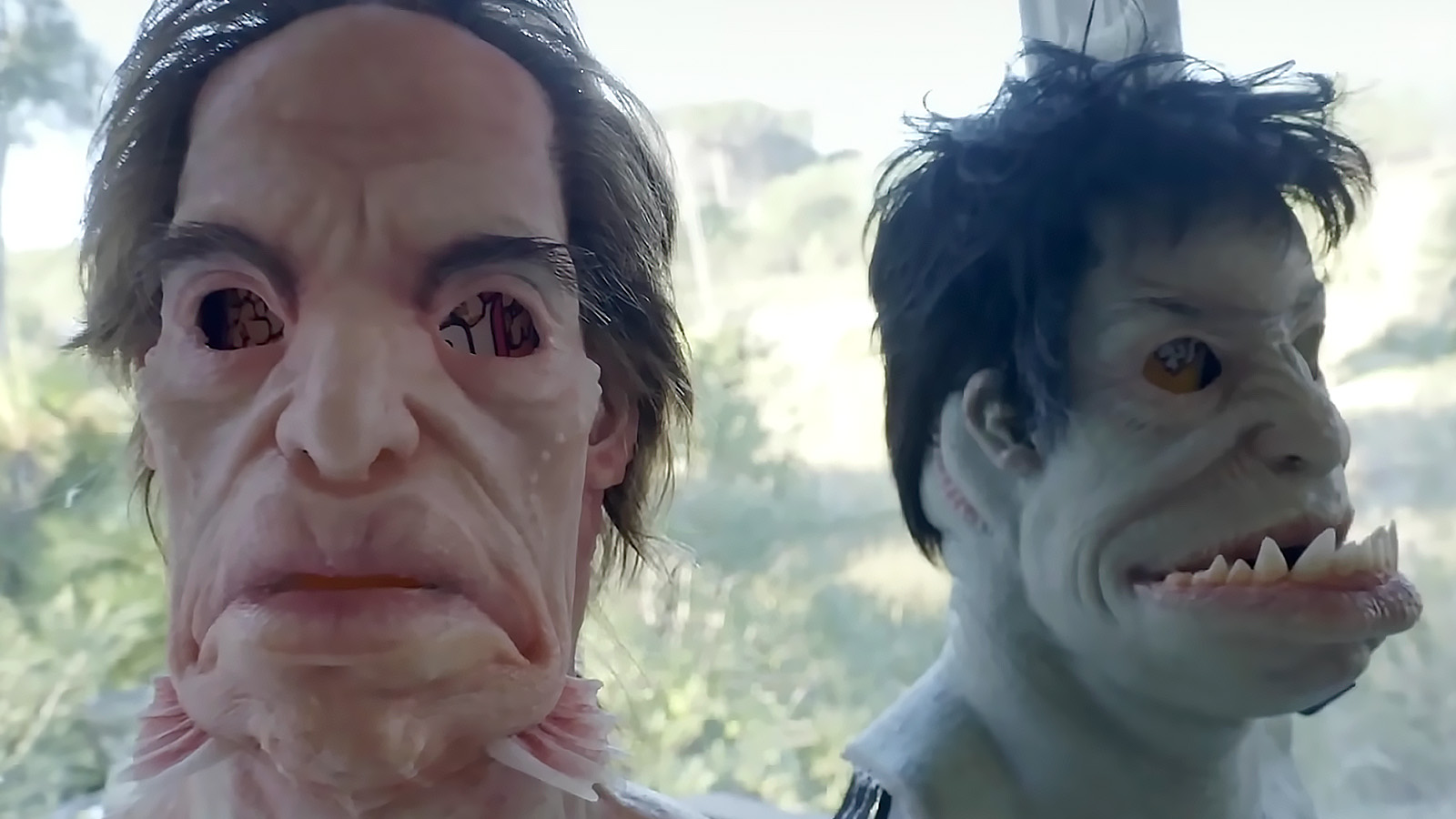
MF: Before we get to the story, I wanted to ask one more thing about skills. It seems like assistant editors are having to learn new things and adopt new techniques. Somebody told me that assistants should be learning more 3D, and there’s so much 3D stuff going on in this series. Is that something that could be a valuable skill? Should assistants know how to use Blender or something like that?
Daniel Williams: I think the main issue there is time. It takes time to make those kinds of effects work. You end up having to spend so much time on it.
The main issue there is time. It takes time to make those kinds of effects work.
Typically, Kevin would be able to throw me a small effect and ask, “Can you work on this stabilization or this paint out really quick?” I could do that in maybe ten or twenty minutes. But we have to throw anything more complicated to the VFX editors, because some of those effects can take hours. We have other stuff to do.
Adam Pearson: If we have to do a complex comp, or if we have to temp in Luffy stretching or something, we’re able to do it with a certain degree of believability. You can watch it and it sells the moment. But when you’re talking about going in and creating 3D elements and bringing them in, it is time consuming and it is a skill. It is a specialized skill.
Daniel Williams: Also, when you’re doing temp effects, you don’t necessarily want your temp effect to look too good. If the temp effect looks very temp, then everyone understands, “Okay, this is temporary. It’s just there to help us understand what is happening in the scene.”
When you’re doing temp effects, you don’t necessarily want your temp effect to look too good.
If the temp starts to look really good, then you’re going to start to get notes on the specifics of the temp look. “We don’t see enough hair on that arm.” Okay… it’s a stretchy arm, guys. This is all temp. You don’t want to get those kind of minute details on a temp effect. All you want it to do is help tell the story.
Eric Litman: To touch on that, I wanted to bring up something that happened when I was working with Adam on the pilot. As most pilots do, they become something that other than what they were intended. We ended up trying to solve a lot of problems with visual effects.


Adam drew the short stick on that one. He had to design some pretty complicated temp effects. It was something I kept my eye on while we were working together, because I thought it was a real benefit that we could use for One Piece. Yeah, he’s doing it all in the Avid. But they were good. Basic, but really good.
When I say really good, I mean that he was telling the story. That’s what I was looking for. So I realized, “This is somebody who understands how to tell a story and knows what we’re trying to say.” It became very easy to communicate with him in shorthand. I think that’s a really good skill. I’m always looking for that in people who are working with me. With Adam, I realized I could utilize this for One Piece.
We can put in eight tracks of music and twenty-four tracks of sound effects and build all this up and make it sound awesome!
Kevin D. Ross: Sure, assistants should learn as much as possible. If they can learn Blender or whatever, great. But it shouldn’t be an expectation in the cutting room all the time. We have been heaping things on the assistant over the years. Now we have more latitude in, “We can put in eight tracks of music and twenty-four tracks of sound effects and build all this up and make it sound awesome!” But it becomes such a burden for one person. We need to limit the expectation as to what the studio is going to get for this.
Daniel Williams: A good example of that is the Axe-Hand Morgan fight. I probably spent a full day doing sound design for an early version of that. It was a ton of work. You had background clashes with the sticks and swords and everything. I thought I did a pretty good job.
They did it in a night and it blew mine out of the water.
Then, at some point early on, we sent that scene to the music editors for them to do a better pass. They did it in a night and it blew mine out of the water. So I spent a full day doing something that was very much temp and the people whose job it is do such a better job.
Kevin D. Ross: A funny note about that: I did a title tool. I made these fake hands that stretched out to grab Zoro and pull him back, these extended hands. When I did that, I got notes. “The skin color doesn’t look quite right.” I said, “Yeah, exactly! It’s temp!”
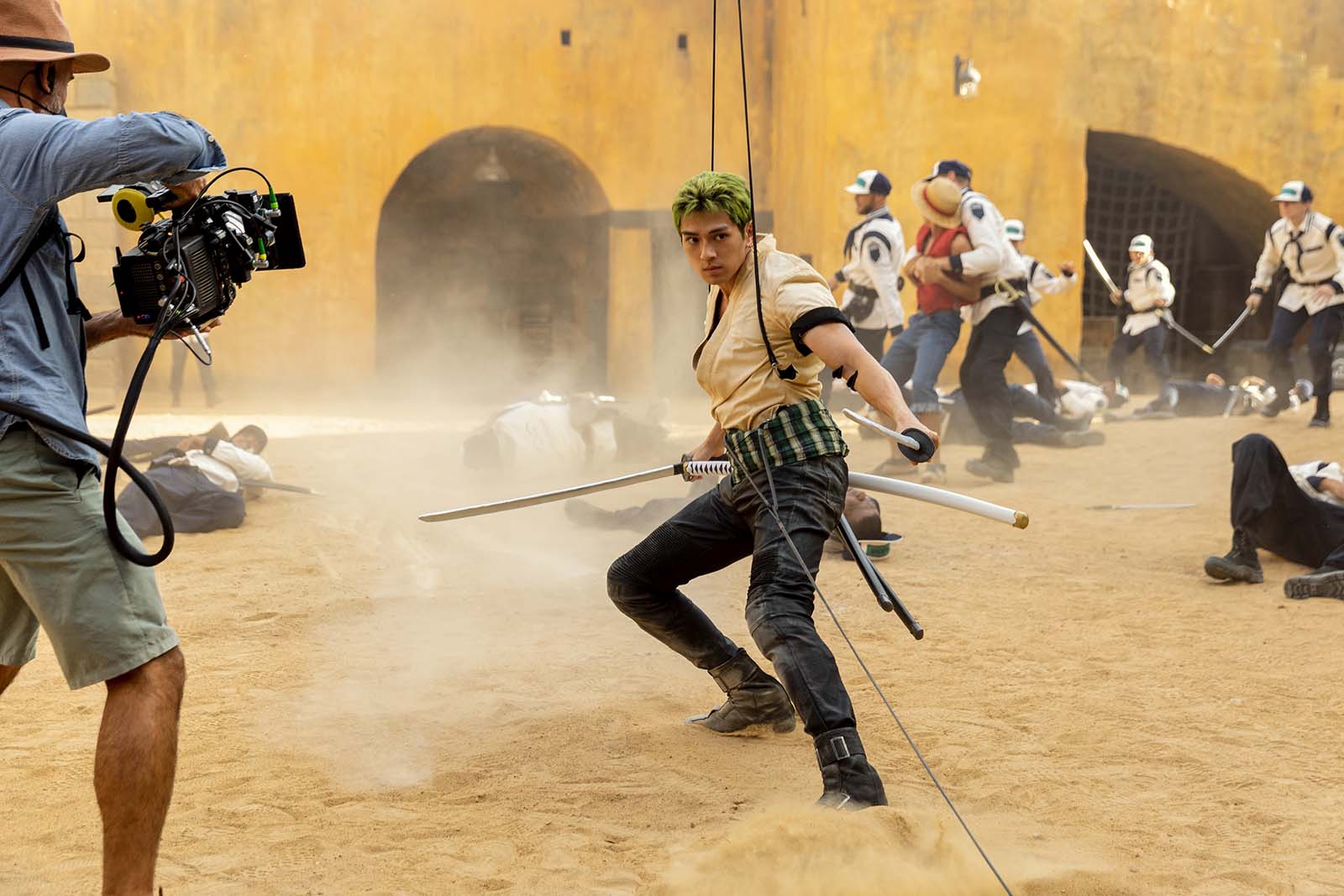
Adam Pearson: It’s been touched on a couple of times during this conversation, but that is another thing that was very, very helpful within this team. The VFX editing team did some really good work. We laid the groundwork for it and they really fleshed it out in a way that brought it into that realm that you’re describing.
MF: That reminds me of something I wanted to ask earlier. We talked about the scale of the show. I mean, the credits! For five minutes, it just says “producer.” There are so many producers on this show!
Of course, you have Eiichiro Oda on, the original creator of One Piece. He wants approval of what’s going on. For you, is this show the typical process? Or is it a case where you are getting a ton of notes and part of your job is to prioritize which notes to tackle first?
Kevin D. Ross: With the Netflix model, you’re not rushed to get your episode done because it’s not airing in two weeks. You don’t have to rush to get it to the post sound house.
The more time there is, the more versions of notes you’re going to get.
However, the more time there is, the more versions of notes you’re going to get. When we went through all the notes, we went through the director’s notes, the producer’s notes, the studio notes, and back to the producer notes. Then it was the studio again, and we basically closed our episodes. We were gone before Oda had his pass. Eric, I’m assuming you addressed his notes for my episode.
Eric Litman: I did, yeah.
Kevin D. Ross: We never really talked about this. See, those little changes, I don’t know what they were exactly. But I was happy when I saw the episodes. I thought, “Okay, they’re pretty close to what we had.” You know what I mean? It was good to feel like the structure was still there.
But as far as multiple notes, I don’t know how you guys feel. I don’t think it’s a bad deal when you’re on these episodes that can sit for a while.
Eric Litman: I thought it was terrific. I really did. We got notes, like I said, about intercutting the Kaya/Usopp scene in episode three. It was just one scene after another and someone said, “Hey, can we do this?” When I heard this idea, I said, “Okay, when do you guys want to see it?” and they go, “You tell us.” They just gave me the time to do it.
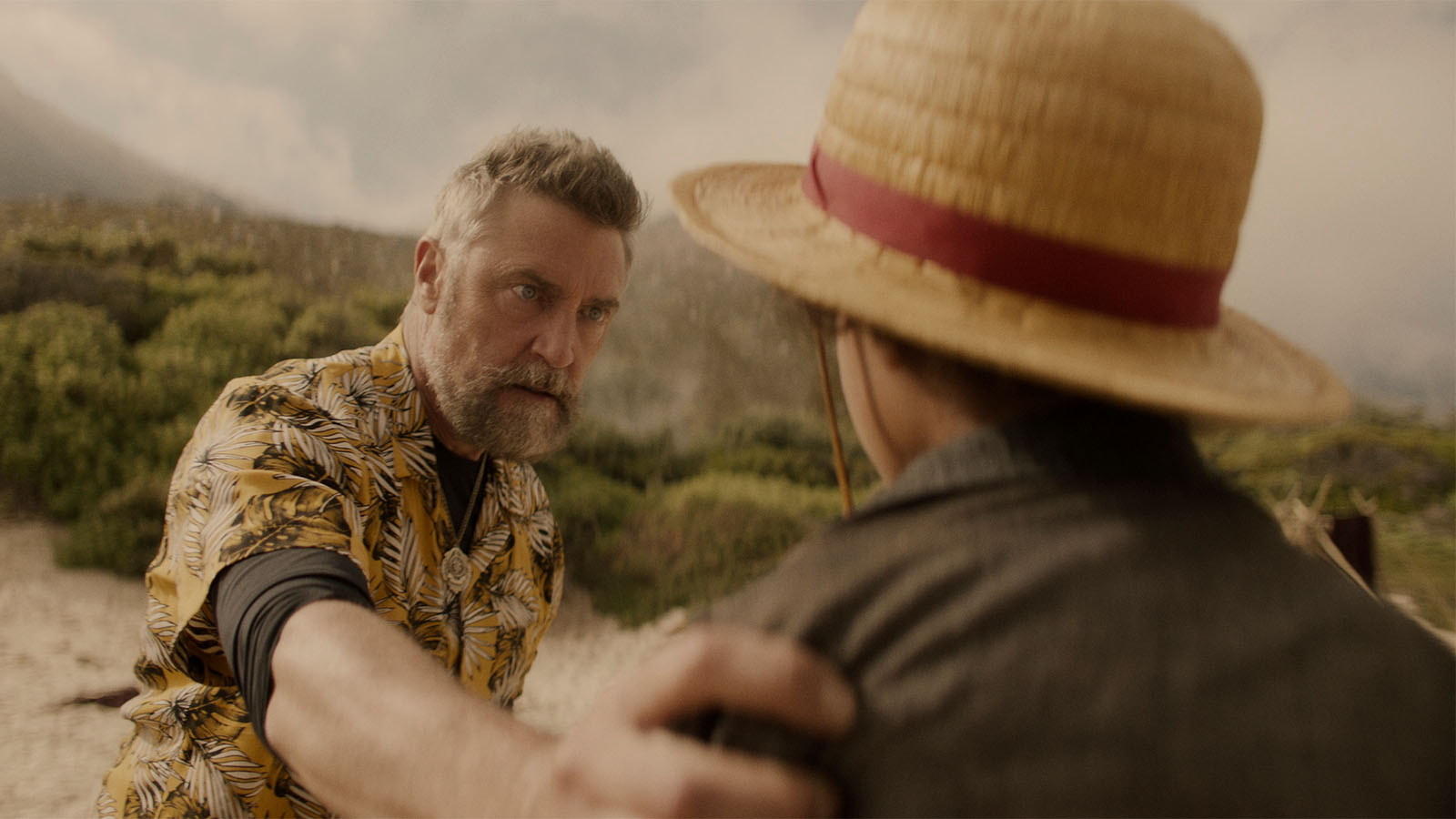
When you get so close to the material, you lose a little bit of your objectivity. You go, “I’m not sure they’re going to go for it.” Then they look at it and say, “That’s great! Let’s do that.” To their credit, they just gave us broad stroke notes and said, “Here, try this.” Then they looked at it and said, “Can you fine-tune this or that” and we’re off.
MF: I picture the One Piece diehards listening to this and going, “What were Oda’s notes? I want to know what Oda thought! What were the changes that he wanted to make?” If you care to answer it, I’d love to hear it. If not, I completely understand and we can move on.
Eric Litman: I will say that he was very opinionated. Correct me if I’m wrong, Adam. We delivered all the episodes to him at the beginning of the year, right?
Adam Pearson: Yes.
Eric Litman: And we got back notes. I would say there were notes there. He was very opinionated. He was very complimentary. He was very happy with what he saw. But his notes were very specific. What was great about his notes is that he had little drawings next to them. So we got to see some private Oda sketches.
MF: You might want to hang on to those.
Eric Litman: I still have them.
MF: I bet you do.
Kevin D. Ross: Can you send me the ones for one and two?
Eric Litman: Sure. It was pretty cool. He had a specific vision. Certain things we re-shot based on his notes.
MF: It felt like Luffy is the hero, the star. But this first season, it really is Nami’s story. The first season is all about her, in a way.
Eric Litman: You understood that she was not a secretive character, but there was something she was hiding. There was something not necessarily nefarious, but “Let’s keep an eye on her.”
Daniel Williams: Credit to Emily Rudd on that one, even back in episode two. I cut all those scenes with her and Zoro tied up in the cage and she was just the lifeline. Anytime I needed to cut away for whatever reason, she always had a good reaction. She was always emoting exactly how you want Nami to be emoting in that moment. Being able to cut to her made those scenes a lot easier.
Kevin D. Ross: The acting was top notch for these characters. These actors were really good, especially Emily. I loved every time I got a scene with her. The way she presented Nami was just really great.
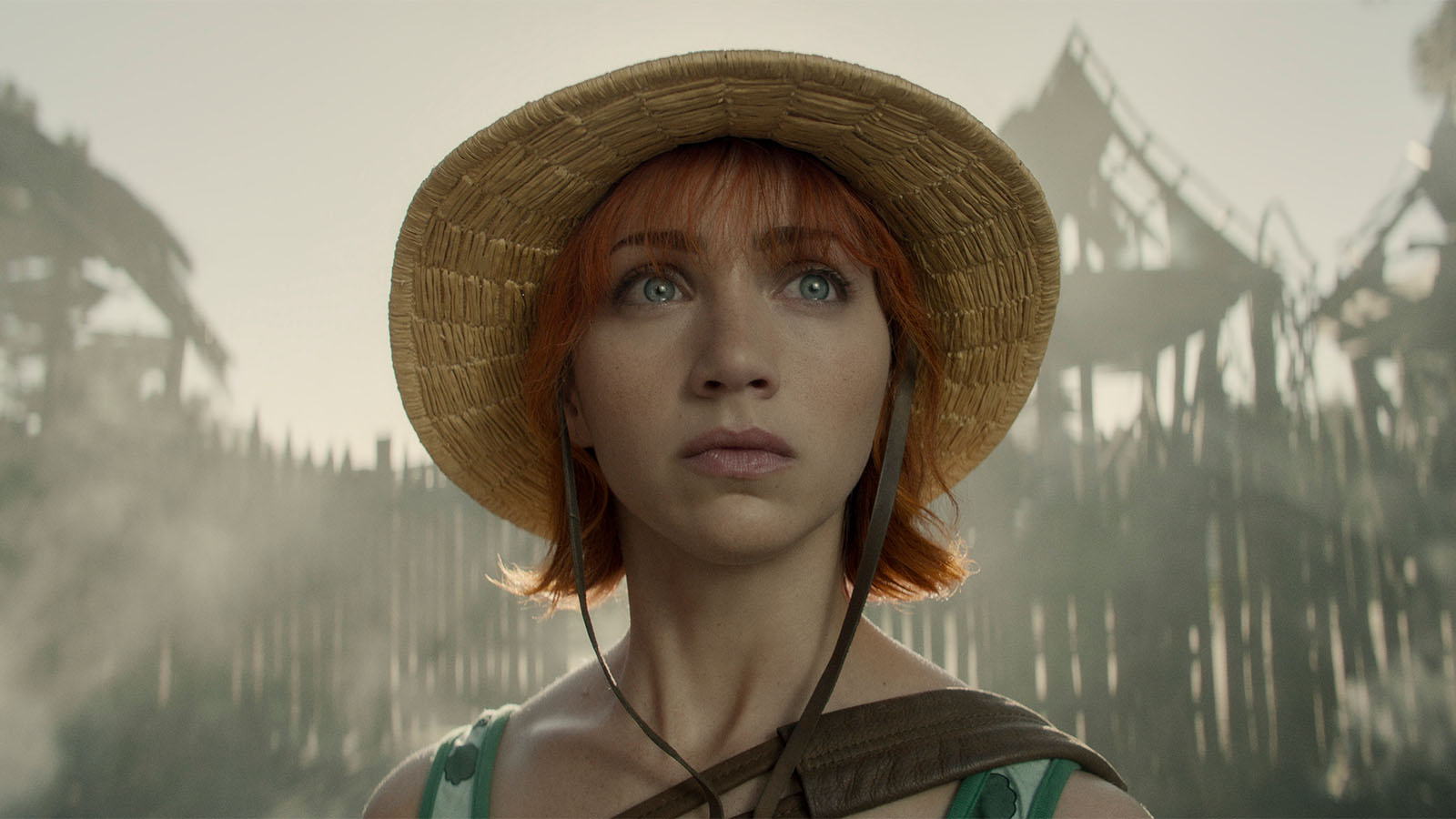
Adam Pearson: She took on a lot of the depth you’re talking about. She gave the audience a firm foundation of where she is in the story.
In that scene where Nami and Kaya are having their moment, Nami finally gets to talk to someone in a “honest way”. To me, one of the best moments from Emily in that scene is when Kaya asks if she’s ever lost someone close to her. Emily’s reaction to that is very clean and very simple. It’s simple, but there is tremendous depth in it. If you know Nami’s story, you know what the truth is for her. Emily plays that beat exceptionally well. I love it so much.
Eric Litman: I believe she said she was born to play this role.
MF: For each of you, do you have a favorite character or a favorite scene from the series that you worked on?
Kevin D. Ross: One of my favorites is a little scene in episode two. I just love it. I got emotional when I cut it. It was when Shanks (played by Peter Gadiot) gave Young Luffy the hat.
I just love that scene. I was so proud of it. But I’m a sucker for melancholy stuff too. I felt good when that happened. Even when I would watch it, I would tear up a little, because I was so into those characters at that moment. It’s not a big action scene. It’s a simple scene, but I always go for the emotional character beats as my favorite scenes.
Eric Litman: I was absolutely thrilled with how the action scenes in my episodes turned out. I thought the stunt team nailed those scenes terrifically. When I put them together, I was thinking, “Wow, these are really good action scenes. I can live in these shots a little bit longer.” I was very happy with how it was cut and put together.
But my favorite scene was when young Zoro learns his partner has died. He’s sitting by the edge of the river and the clouds and the sun are hitting. When I saw those dailies and what Emma Sullivan, the director of this episode, shot, I went, “Wow, this is next level footage.” I was really impressed. I thought, “This alone, I’m in. You can’t do much better than this.” She got terrific performances too.
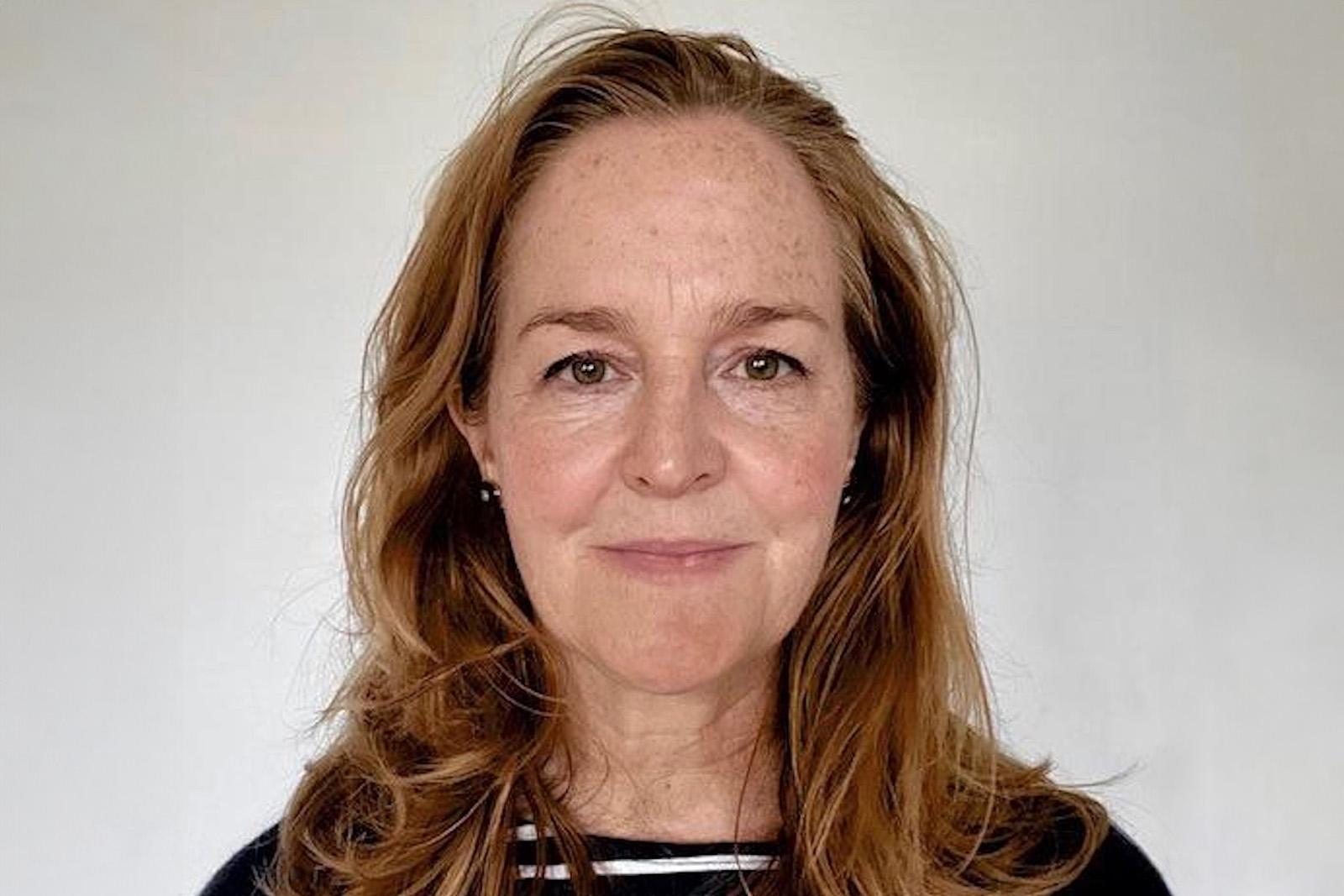
Daniel Williams: In a similar vein, and also selfishly, I got through the scenes I cut. The first scene I got to cut on episode one was the Zoro fight with Mr. 7.
Kevin D. Ross: And I never should have given it to him.
Daniel Williams: It was such an awesome fight. It was so good. It’s a scene that didn’t go through too many changes after we got going. It was such a fun, fast pace, very samurai-esque fight. That was really cool. It’s a hard pick because that was so fun to do.
The emotional moment that I got to do was Koby and Luffy’s departure. That one was a big emotional beat that worked so well when we would screen it, with the temp cue that we ended up using and everything. It was such a heartfelt moment for Koby and Luffy.

Adam Pearson: The emotional moment for me is in episode seven, when Nezumi (played by Rory Acton Burnell) is taking Nami’s stash. I’ve watched this show 200 times at this point, and it’s not even from my episode, but that cuts through me every single time. Again, because Emily is amazing at it.
From one of my episodes… This is a very anime-ish, deep-cutty kind of thing. But there is one shot that I absolutely love every time I see it. It’s when Kuro is walking down the hall, coming to Kaya’s room. There was a profile shot. Again, to Emma’s credit, this is a gorgeous piece of footage.
Kuro is walking through this room in profile. There’s light streaming through one of these shutters, and you get this live-action representation of something that happens in anime all the time that I didn’t think you could recreate in real life: Kuro’s glasses are almost bright white, and the rest of his body is almost completely silhouetted and black. I see that every time and I just giggle. I love it so much.

Kevin D. Ross: I want to add that the other scene that really affected me, which is a scene that Adam cut for one of our episodes, was when Usopp told Kaya that he’s not leaving her. There was a lot of footage to go through, a lot of emotional beats to hit, and Adam cut that scene and I went, “Okay, he crushed this.” I don’t think that scene ever really changed.
Adam Pearson: I love that scene. Jacob also did a really amazing job. That moment where he makes that decision is the most definitive part of that scene. He did something very powerful, but very simple, and it made the whole thing sing for me.
MF: Those were all great scenes, all very sentimental answers. I’m sorry to tell you, you’ve all failed. The only correct answer is anything with Buggy the pirate clown.
Eric Litman: Definitely the favorite villain for me.
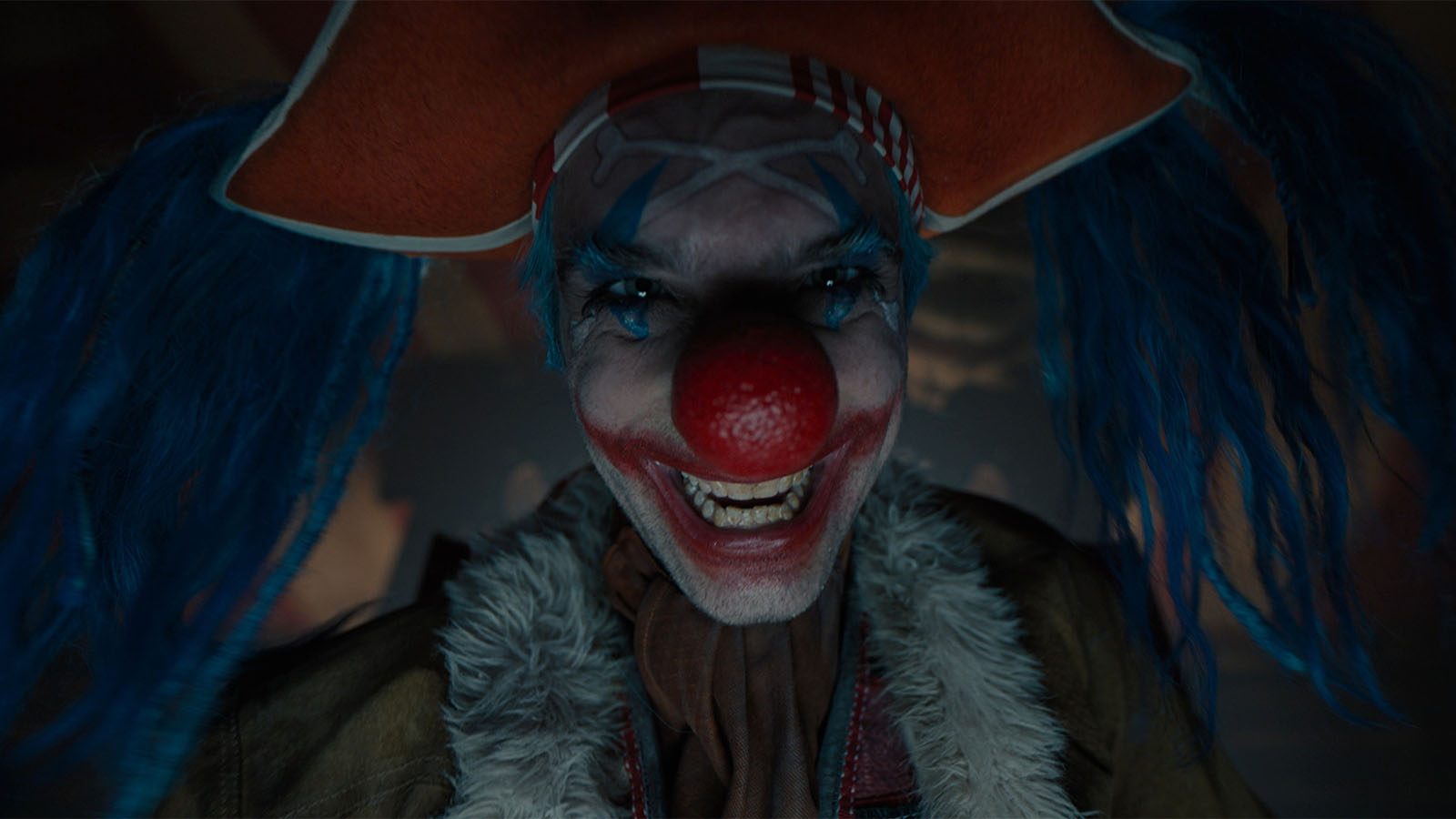
Adam Pearson: In episode two he comes out and he’s yelling, “No, no, no, it’s all wrong!”
Daniel Williams: It’s pretty good.
Kevin D. Ross: That is good.
MF: Was that Buggy or Eric? Well, guys, you did a fantastic job. You did a great job on this interview as well. I would almost call it endearing. Thank you for that, Dan.
Daniel Williams: Thank you for having us.
Kevin D. Ross: Wait, are we recording?

